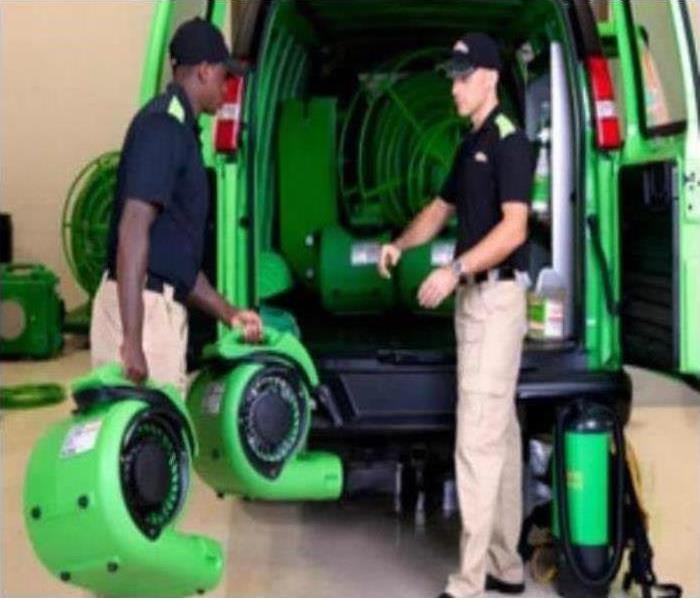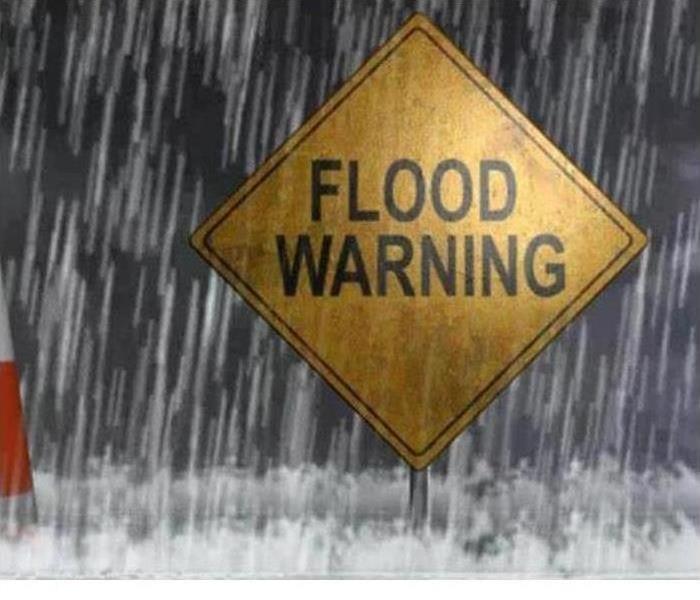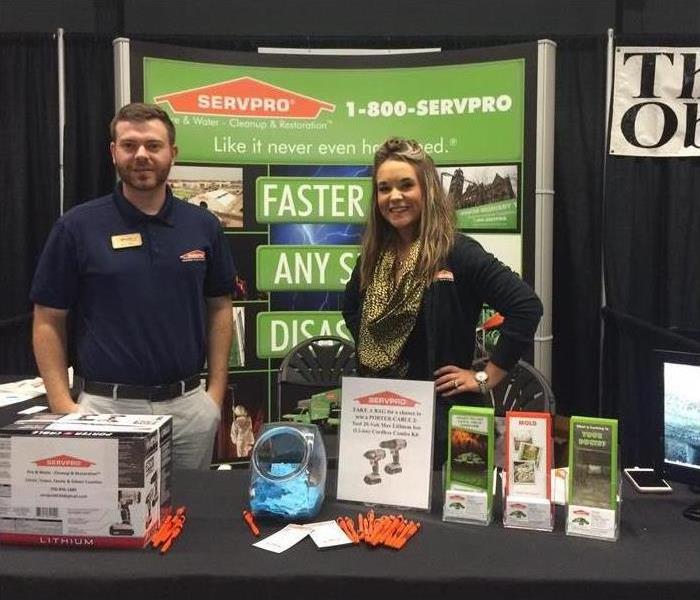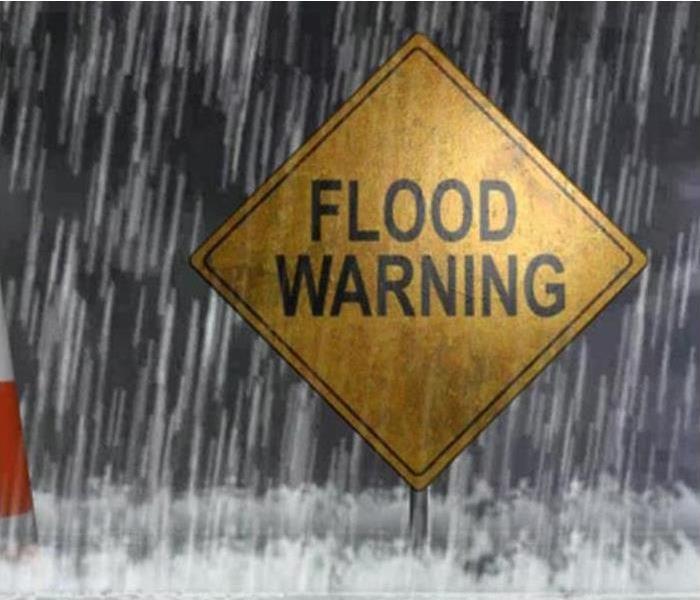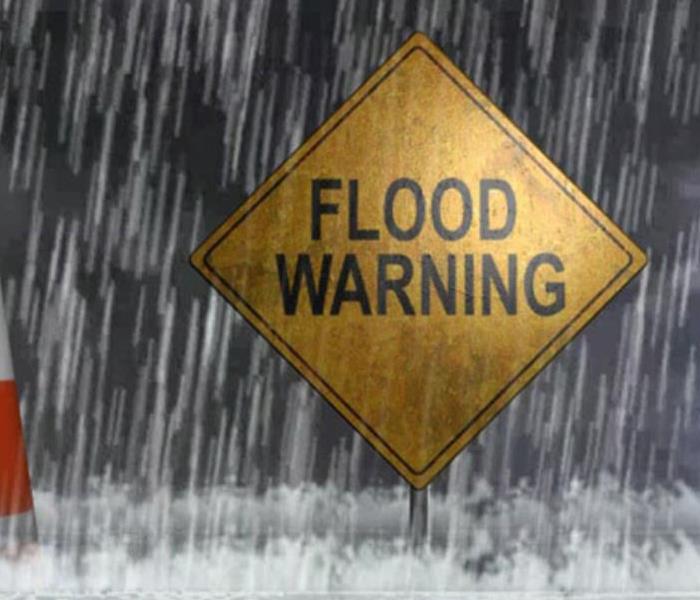Recent Storm Damage Posts
Weatherproofing 101: Ultimate Guide to Protect Your Property
3/25/2024 (Permalink)
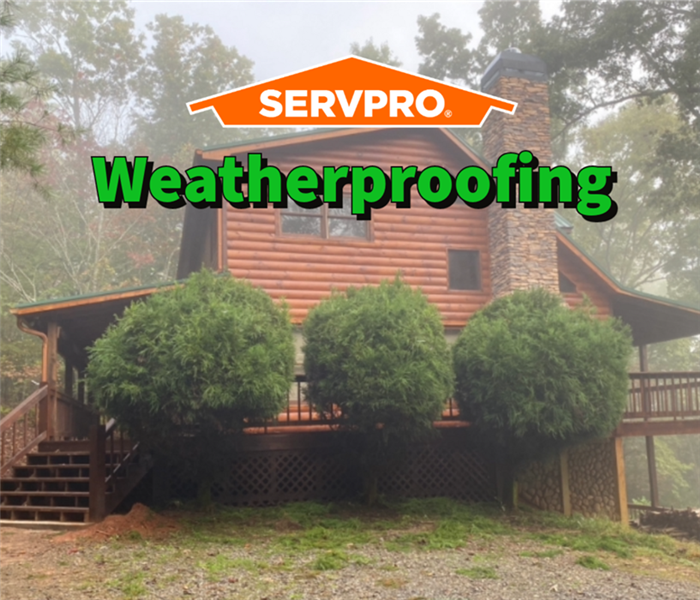 The professionals at SERVPRO understand the importance of safeguarding your property with quality weatherproofing!
The professionals at SERVPRO understand the importance of safeguarding your property with quality weatherproofing!
Discover how property damage restoration experts can help shield your Blue Ridge home from the elements
Weatherproofing your property is not just about shielding it from the elements; it's about fortifying your home against nature's fury and safeguarding your peace of mind. This comprehensive guide delves into the importance of weatherproofing, discusses common vulnerabilities, and describes essential steps to weatherproof your home. We will explore a scenario in Blue Ridge, Georgia, where a homeowner faced the consequences of inadequate weatherproofing and turned to SERVPRO® for expert assistance.
Understanding the importance of weatherproofing
Weatherproofing is the proactive approach to protecting your property from adverse weather conditions, including rain, snow, wind, and extreme temperatures. By weatherproofing your home, you can:
- Prevent water intrusion: Proper weatherproofing measures help prevent water infiltration, reducing the risk of moisture damage, mold growth, and structural deterioration.
- Enhance energy efficiency: Weatherproofing improves insulation and seals air leaks, reducing energy consumption and utility costs associated with heating and cooling.
- Increase property value: A weatherproofed home is more resilient to weather-related damage, enhancing its overall value and market appeal.
- Ensure comfort and safety: Weatherproofing creates a comfortable and safe indoor environment by minimizing drafts, temperature fluctuations, and moisture-related issues.
A recent scenario in Blue Ridge, Georgia: The consequences of inadequate weatherproofing
In Blue Ridge, Georgia, a homeowner experienced recurring water leaks during heavy rain and drafts during extreme cold periods. Concerned about the potential damage and ongoing discomfort, the homeowner sought professional property damage restoration assistance from SERVPRO to assess and address the weatherproofing vulnerabilities.
Professional weatherproofing assessment
Upon arrival, our SERVPRO team conducted a comprehensive weatherproofing assessment, examining the exterior envelope, roofing system, windows, doors, and foundation for vulnerabilities. We utilized advanced technology and expertise to identify areas prone to water infiltration, air leaks, and structural weaknesses.
Seal and insulate
Our assessment recommended sealing gaps, cracks, and openings in the building envelope to prevent water intrusion and air leakage. We also applied weatherstripping around windows and doors, installed caulking and sealants, and insulated attic spaces and exterior walls to enhance thermal efficiency.
Roof inspection and maintenance
We thoroughly inspected the roofing system to safeguard against roof leaks and water damage, identifying missing shingles, damaged flashing, and deteriorating seals. We performed necessary repairs, reinforced flashing around chimneys and vents, and cleared debris from gutters and downspouts to ensure proper drainage.
Upgrade windows and doors
Inadequate windows and doors can compromise weatherproofing efforts, allowing water and air infiltration. To enhance insulation and durability, we recommend upgrading to energy-efficient windows and doors with double—or triple-pane glass, low-emissivity coatings, and weatherproof seals.
Foundation waterproofing
A strong foundation is essential for weatherproofing your home and maintaining structural integrity. We inspected the foundation for cracks, leaks, and moisture intrusion, applied waterproof coatings, installed drainage systems, and graded the landscape to direct water away from the property.
Ongoing maintenance and monitoring
Weatherproofing is an ongoing process that requires regular maintenance and monitoring. We provided the homeowner with maintenance tips and schedules to preserve the effectiveness of weatherproofing measures and ensure long-term protection against the elements.
Partner with SERVPRO for comprehensive weatherproofing solutions
Weatherproofing your home is a proactive investment in protection, comfort, and peace of mind. With SERVPRO as your trusted partner, you can weatherproof your property confidently, knowing that skilled professionals are dedicated to fortifying your home against nature's fury.
When it comes to weatherproofing, don't wait for the next storm to strike—take proactive steps today to safeguard your Blue Ridge, Georgia, home with SERVPRO. Let us help you weatherproof your property and prepare for whatever nature may bring. With SERVPRO by your side, your home can weather any storm and emerge more robust and resilient.
5 Essential Storm Protection Tips For Property Owners
10/30/2023 (Permalink)
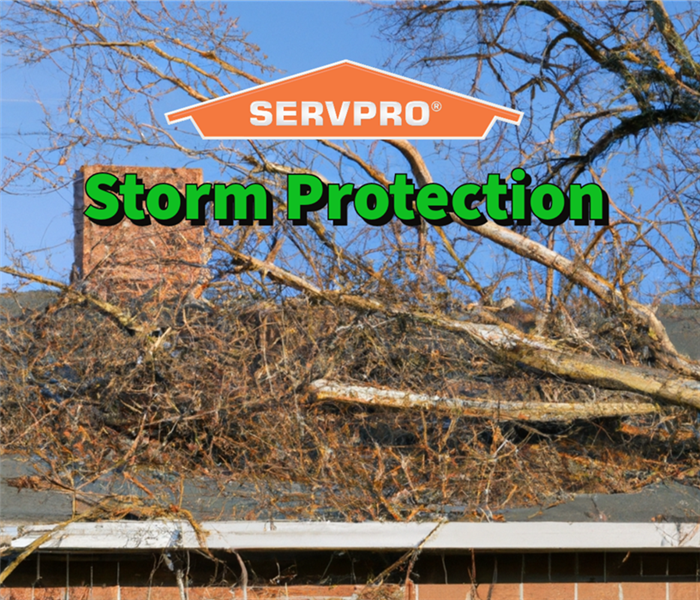 SERVPRO offers prompt, reliable, and professional storm restoration services.
SERVPRO offers prompt, reliable, and professional storm restoration services.
Learn how to shield your Blue Ridge property with our superior storm protection tips.
Storms are nature's most theatrical performances, but the aftermath can be devastating when their intensity targets our homes. With its scenic views and tranquil environment, Blue Ridge, Georgia, isn't immune to these natural events. As residents, equipping ourselves with essential storm protection knowledge safeguards our property and brings peace of mind.
With this in mind, let's delve into the importance of storm protection and why SERVPRO® should be your first call when the storm has passed!
What are the common types of storms in Blue Ridge?
Blue Ridge experiences a range of climatic disturbances, from heavy rainfalls and thunderstorms to occasional snowstorms in the colder months. While the weather is generally pleasant, these sporadic yet intense weather events call for proactive storm protection measures. By understanding the types of storms in Blue Ridge you're likely to face, you can better prepare for them.
How can homeowners prevent storm damage to their property?
Forewarned is forearmed. Here are five essential storm protection tips that can help you minimize potential damage:
- Secure outdoor items: Loose items like garden tools, furniture, and decorative items can become potential projectiles during strong winds. Ensure they are stored safely or anchored correctly.
- Inspect and repair your roof: Regularly check for missing or loose shingles. A strong gust can exploit weaknesses, leading to leaks or more severe roof damage.
- Clean gutters and drains: A blocked drainage system can lead to water accumulation and possible flooding. Ensure they are free of debris, especially during a storm warning.
- Install storm shutters: Especially for properties prone to severe weather, storm shutters can shield your windows from breaking due to flying debris.
- Trim trees and large plants: Overhanging branches or weak trees can fall on your property. Regular trimming and removal of vulnerable trees can prevent potential damage.
Why is it crucial to call professionals post-storm, even if the damage isn't visible?
Let's look at a recent scenario. A homeowner in Blue Ridge believed they had weathered a particularly nasty storm without any damage. To the naked eye, their property seemed fine. However, small leaks had formed in the attic, and the basement showed subtle signs of water infiltration. Left unchecked, this could lead to mold growth and structural issues.
Enter SERVPRO. The homeowner, realizing the potential problems, called our team. Our trained storm damage professionals swiftly identified and rectified the hidden damage, saving the property from longer-term issues and potentially higher repair costs.
This instance serves as a poignant reminder: just because storm damage isn't immediately visible doesn't mean it's not there.
What makes SERVPRO the ideal choice for storm damage repairs?
When faced with storm aftermath, you need a team that understands the intricacies of damage repair and offers prompt, reliable, and professional service. Here's why SERVPRO fits the bill:
- Swift response: Time is of the essence post-storm. SERVPRO ensures quick damage assessments and timely repairs, reducing the risk of further damage.
- Highly trained professionals: Our team is well-versed with advanced techniques to handle storm damage of any scale. Our expertise ensures that the job gets done right.
- Advanced equipment: We employ state-of-the-art equipment for thorough cleanup, drying, and restoration.
- Trust and reliability: With a reputation built over the years, SERVPRO is a trusted name in the industry. Our commitment is to restore your property to its pre-storm condition.
- Holistic approach: From water extraction and mold remediation to complete restoration, SERVPRO provides comprehensive solutions.
Conclusion
Storm protection isn't just about preparing for the event; it's about having a reliable partner to turn to when the skies clear. Blue Ridge, with its diverse weather patterns, demands a proactive approach. Homeowners can significantly reduce the risks associated with severe weather events through our outlined storm protection tips.
However, when the storm passes, and you're faced with the aftermath, know that SERVPRO is just a call away. Our prompt response, expert teams, and unwavering commitment ensure your property returns to its pristine condition. Remember, with SERVPRO by your side, you're never alone against the storm.
Asphalt Shingle Damage: Our #1 Guide to Protect Your Roof
5/29/2023 (Permalink)
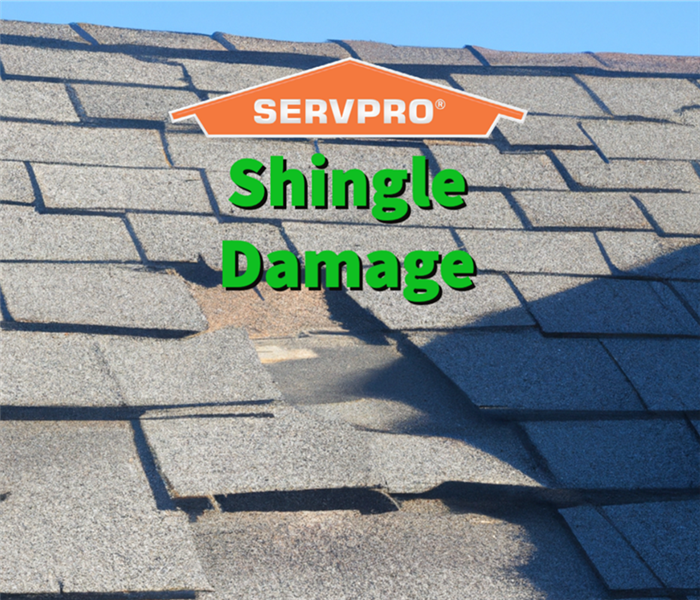 SERVPRO will ensure shingle damage doesn't compromise the safety and integrity of your home.
SERVPRO will ensure shingle damage doesn't compromise the safety and integrity of your home.
Understanding the common signs of asphalt shingle damage can help you avoid severe damage.
Few things are as crucial as a sturdy roof when safeguarding your home from the elements. Asphalt shingles are popular for homeowners, offering durability and aesthetic appeal. However, even the most robust shingles can fall victim to shingle damage caused by severe storms. Detecting signs of asphalt shingle damage early on is vital to preventing further issues, such as leaks and structural compromises.
In this blog post, we will explore the common signs of shingle damage and how the professionals at SERVPRO can come to your aid when shingle damage occurs. So don't let your home's first line of defense crumble—take action with SERVPRO of Union, Towns, Fannin & Gilmer Counties today!
The telltale signs of asphalt shingle damage
There are two main signs of asphalt shingle damage:
- Curling and clawing shingles
- Missing shingles
Curling and clawing shingles
One of the most visible signs of shingle damage is curling or clawing. When shingles start to curl, they become vulnerable to water infiltration and are more likely to be blown off during high winds. Conversely, clawing occurs when the edges of the shingles remain flat, but the middle starts to rise. Both of these conditions are indications of shingle wear and require immediate attention.
Missing shingles
Storms with strong winds can cause shingles to become dislodged or completely blown off, leaving your roof vulnerable to water damage and compromising its ability to protect your home. Inspecting your roof after a storm and checking for any missing shingles is essential in preventing further deterioration. If you notice any gaps or exposed areas, contact the professionals at SERVPRO for a thorough inspection and prompt repairs.
Your shingle damage solution
When storm damage strikes, time is of the essence. SERVPRO understands the urgency and the need for swift action. Upon contacting them, our team of experienced professionals will promptly respond to your call, equipped with the necessary tools and expertise to assess the extent of the damage. Then, using advanced techniques and state-of-the-art equipment, we will thoroughly inspect your roof for signs of shingle damage, ensuring no underlying issues go unnoticed.
After a thorough assessment, SERVPRO's highly skilled technicians will devise a customized plan to restore your asphalt shingles to their former glory. Whether repairing a few damaged shingles or replacing the entire roof, we will work diligently to provide a comprehensive solution tailored to your needs. In addition, with our expertise in storm damage, you can trust that we can help protect your home against future weather events. For example: reinforcing vulnerable areas, such as the edges and corners of shingles, can increase their resistance to wind uplift. Using innovative techniques and quality materials, SERVPRO ensures your roof is fortified against the harshest elements nature can unleash.
Why choose SERVPRO services for your shingle damage
SERVPRO takes pride in our team of skilled technicians with extensive knowledge of handling storm damage and asphalt shingle repairs. Our storm damage professionals undergo rigorous training and stay updated on the latest industry standards to ensure the highest level of service. With their attention to detail and commitment to excellence, you can have peace of mind knowing that your home is in capable hands.
We understand that dealing with shingle damage can be overwhelming, especially when navigating insurance claims. SERVPRO provides valuable assistance by working closely with insurance companies on your behalf. Their experienced team will document the damage, prepare detailed reports, and communicate directly with the insurance adjusters. This streamlined approach ensures a smooth and hassle-free claims process, allowing you to focus on restoring your home while leaving the paperwork to the experts.
Wrapping up
Your roof is your home's first line of defense, and asphalt shingles protect it from the elements. Identifying signs of shingle damage and taking prompt action can save you from extensive repairs and potential water damage. SERVPRO is your trusted partner in restoring and fortifying your asphalt shingles during storm damage. With our expertise, rapid response, and commitment to quality, we provide comprehensive solutions tailored to your specific needs.
Quality is always maintained at SERVPRO of Union, Towns, Fannin & Gilmer Counties. We utilize top-of-the-line materials and advanced equipment to deliver exceptional results. From durable replacement shingles to cutting-edge tools, every aspect of our service is designed to withstand the test of time and provide long-lasting protection for your home. Regarding asphalt shingle repairs, SERVPRO's commitment to quality ensures that you receive the best possible solution for your roofing needs.
Don't let shingle damage compromise the safety and integrity of your home. Instead, unleash the power of SERVPRO today and experience unparalleled service that keeps your roof strong and your peace of mind intact. Contact us today for 24/7 emergency services!
The Danger of Fallen Tree Damage & 4 Steps to Recovery
1/30/2023 (Permalink)
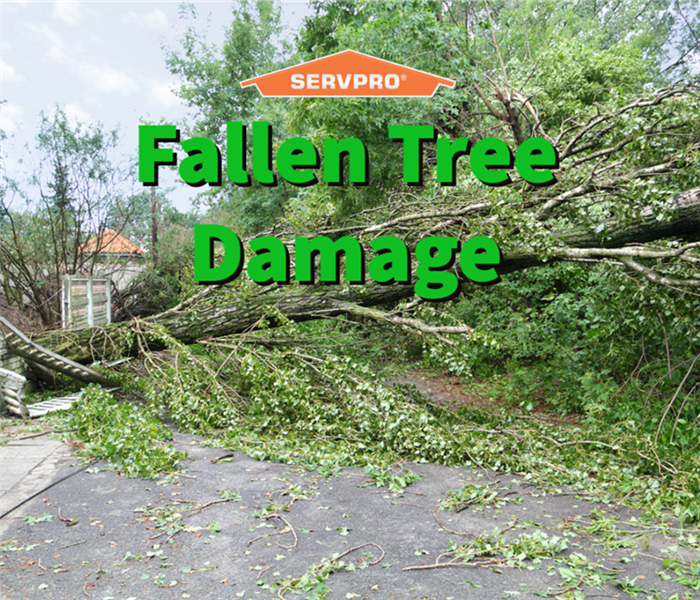 The professionals at SERVPRO are readily available to clean up damages caused by fallen trees.
The professionals at SERVPRO are readily available to clean up damages caused by fallen trees.
Fallen tree damage can cause severe destruction to your property.
The professionals at SERVPRO of Union, Towns, Fannin & Gilmer Counties have seen it all when it comes to fallen tree damage, from structural damage to landscape destruction. Fallen trees can be hazardous when they cause power outages or knock down power lines.
It’s important to remember the impact fallen tree damage can have on your home or business and highlight the importance of proper tree management and maintenance. Taking steps to avoid fallen trees can make a huge difference in restoring your property from tree-related damage.
When dealing with fallen tree damage, taking action quickly and preparing for the aftermath is essential. The following blog post will go over the four steps to recovering from fallen tree damage and how SERVPRO of Union, Towns, Fannin & Gilmer Counties can help.
What is fallen tree damage?
Fallen tree damage typically involves fallen trees damaging structures and property and even causing power outages. The potential destruction caused by fallen tree damage is quite vast. It includes damaged roofing, broken windows, destroyed walkways, fallen limbs on cars or homes, fallen trees blocking driveways, and fallen trees on power lines.
The importance of proper tree management and maintenance
Proper tree management and maintenance are essential to preventing fallen tree damage. Have your trees regularly inspected by a professional arborist who can provide expertise on the health of your trees and identify any potential risks associated with fallen tree damage.
The four steps to recovering from fallen tree damage
- Talk to your insurance company: If fallen trees have caused structural damage to your property, it’s essential to contact your insurance provider and make a claim for any repairs that may be necessary. You will want your insurance to cover the damages when fallen trees have caused extensive damage or destroyed large portions of your property.
- Clean up: Once fallen trees are removed, focus on cleaning up the area and disposing of fallen limbs, leaves, and other debris. Cleaning up the debris will help prevent further damage from occurring.
- Repair damages: Depending on the extent of the fallen tree damage, some repairs may be necessary to restore your property to its original condition. Contact a storm damage restoration company that can repair damaged roofing, broken windows, fallen limbs on cars or other outside structures, fallen trees blocking driveways, and fallen trees on power lines.
- Contact a professional arborist: Consulting a professional arborist can help avoid future fallen tree damage. They can provide expertise on the health of your trees and identify any potential risks associated with fallen tree damage.
How can the professionals at SERVPRO help?
When your property suffers from fallen tree damage, the professionals at SERVPRO of Union, Towns, Fannin & Gilmer Counties are here to help. We specialize in fallen tree clean-up and recovery and can assist with debris removal, structural repairs, insurance claims processing, and more. No matter how severe the fallen tree damage may be, we are equipped with the latest technology and the expertise to restore your property to its original condition.
Conclusion
Fallen tree damage can cause extensive problems, from structural damage to landscape destruction. Therefore, it’s essential to be aware of the potential destruction fallen trees can cause and take the steps above after fallen tree damage has occurred.
When your property suffers from fallen tree damage, SERVPRO of Union, Towns, Fannin & Gilmer Counties are experienced in dealing with fallen tree damage and can help restore your property to its original condition. They can help with fallen trees, fallen tree removal, and repairs to damaged structures or property.
If you require fallen tree damage assistance, contact SERVPRO of Union, Towns, Fannin & Gilmer Counties for reliable service and recovery!
Autumn Storm Damage: 4 Common Weather Threats
9/16/2022 (Permalink)
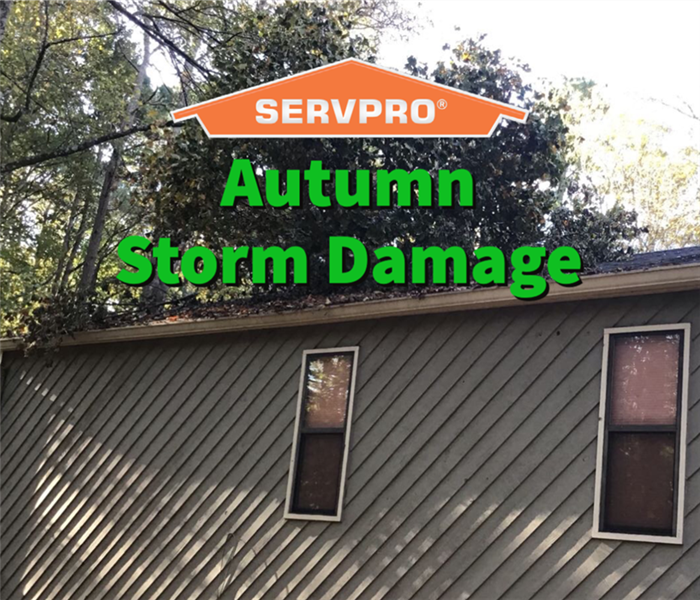 The professionals at SERVPRO offer emergency storm restoration services!
The professionals at SERVPRO offer emergency storm restoration services!
The professionals at SERVPRO of SERVPRO of Union, Towns, Fannin & Gilmer Counties are here to help you combat autumn storm damage.
The autumn season is most people's favorite season. The leaves are changing color, the air is getting cooler, and pumpkin spice lattes are back on the menu. But autumn also brings potentially dangerous weather conditions that can cause severe damage to your home or property.
The professionals at SERVPRO of Union, Towns, Fannin & Gilmer Counties have seen it all when it comes to autumn weather damage, and we want to ensure you are well prepared before the storm hits.
Here are four of the most common autumn weather threats:
- High winds
- Heavy rains
- Cold fronts
- Snowfall
In the following blog post, we will be going over what damages each weather condition can cause and how SERVPRO of Union, Towns, Fannin & Gilmer Counties can help.
What is autumn storm damage?
Autumn storm damage is any damage that is caused by autumn weather conditions. The best way to protect your home or property from autumn storm damage is to be aware of the threats and take the necessary precautions. Here is a list of the four most common autumn weather threats and the damages they can cause:
1) What damages can high winds cause?
High winds can cause severe property damage by blowing objects around or even lifting them and carrying them away. They can also knock down trees and power lines, causing power outages.
2) What damages can heavy rains cause?
Heavy rains can lead to flash flooding when water accumulates rapidly and causes sudden flooding in areas that are generally not prone to it. Flash flooding can be hazardous and will leave a property with water damage.
3) What damages can cold fronts cause?
A cold front is a weather system that brings a sudden drop in temperature and is often accompanied by rain or snow. Cold fronts can cause power outages and pipe bursts from the extreme influx in temperature.
4) What damages can snowfall cause?
Snowfall can cause several types of damage, including roof collapses, downed power lines, and slippery conditions.
How can you protect your home and property from autumn storm damage?
Now that you know the four most common autumn weather threats and the damages they can cause, it's time to learn how you can protect your property from them. Here are some of the most important tips to remember this autumn season:
- Have a disaster preparedness plan. This plan should include a list of emergency contact numbers, evacuation routes, and a safe place to go if you need to evacuate.
- Make sure your home is properly insured. Autumn storm damage can be very costly, so it is essential to have insurance coverage in case of a storm.
- Keep an eye on the weather forecast and be prepared for severe weather conditions. Make sure you have plenty of food, water, and other supplies if you lose power or must evacuate.
- Clean up any debris or branches that could cause problems during a storm. Clogged gutters are a real issue, so it is essential to ensure your gutters are clear and free of leaves so water can flow away from your home.
- Stay safe during a storm! Do not try to leave your home during high winds or heavy rains, and stay away from downed power lines.
How does SERVPRO of Union, Towns, Fannin & Gilmer Counties help with autumn storm damage restoration?
Even the most prepared property owners can't always avoid autumn storm damage. If your home or property is damaged by an autumn storm, SERVPRO of Union, Towns, Fannin & Gilmer Counties is here to help. We are a professional storm restoration company with years of experience helping homeowners recover from storm damage. We have the knowledge and equipment to quickly and efficiently restore your home or property to its pre-storm condition.
When you choose to hire us for storm damage restoration, we will:
- Inspect your home or property for damage and identify the extent of the damage.
- Determine what type of repairs are needed and create a plan to restore your property to its pre-storm condition.
- Create a detailed insurance estimate.
- Work quickly and efficiently to repair any damage caused by the storm.
- Keep you updated on our progress and answer any questions you may have.
Contact SERVPRO of Union, Towns, Fannin & Gilmer Counties today for all your autumn storm restoration needs! We are available 24/7 and will respond quickly to help minimize the damages caused by a storm.
Summer Storm Damage: 5 Tips for Cleaning Up After a Storm
8/19/2022 (Permalink)
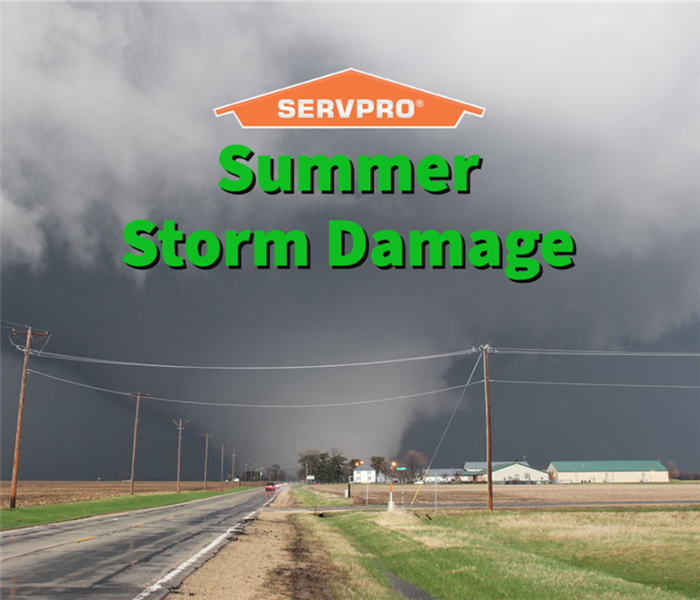 The professionals at SERVPRO are here to help you combat summer storm damage!
The professionals at SERVPRO are here to help you combat summer storm damage!
With the help of the professionals at SERVPRO of Union, Towns, Fannin & Gilmer Counties, you never have to face summer storm damage alone!
Summer storms can cause a lot of damage, both to your property and to your peace of mind. When unprepared, a summer storm's aftermath can be chaotic and overwhelming. That's why it's essential to have a plan in place before the storm hits.
Although even with thorough planning, your property may still obtain severe summer storm damage, and you may not know what to do to start the cleanup process. That is why we put together five tips for cleaning up after a summer storm has passed so that you can get your home back to normal as soon as possible!
The most common type of summer storm that causes damage
Every summer, the state of Georgia is hit with multiple storms, and thunderstorms are the most common type of storm that causes damage. Thunderstorms can cause damage to your property in several ways, including exterior damage, water damage, and fallen tree damage.
While all thunderstorms have the potential to cause summer storm damage, some are more powerful than others. Severe thunderstorms can produce wind gusts with high mph, hail the size of quarters or larger, and tornadoes. Therefore, when a severe thunderstorm hits, it's essential to take shelter immediately.
What to do after summer storm damage has occurred?
Once the storm has passed, it's time to start the cleanup process! Here are five tips for cleaning up after summer storm damage has occurred:
- Stay Safe: First and foremost, staying safe is vital after summer storm damage. Be sure to avoid any downed power lines and beware of broken glass or other sharp objects that may be present. Contact a professional for assistance if you encounter any summer storm damage that presents a safety hazard.
- Contact Your Insurance Company: The next step is to notify your insurance company of the summer storm damage that has occurred. They will likely send an adjuster to assess the damage and determine if your insurance policy covers the damages.
- Make a List of Damages: Once you have contacted your insurance company, it's time to list all the summer storm damage that has occurred to your property. Your list will be helpful when filing your insurance claim. At this time, you will also want to take photos or videos of the damage for documentation purposes.
- Start the Cleanup Process: Once you have made a list of all the summer storm damage, it's time to start the cleanup process. Depending on the severity of the damage, you may be able to clean up some of the summer storm damage yourself. However, it's best to contact a professional storm damage restoration company like SERVPRO of Union, Towns, Fannin & Gilmer Counties for more severe summer storm damage.
- Prevent Further Damage: Once you have started the summer storm damage cleanup process, it's essential to take steps to prevent further damage. You should remove all salvageable items to a secure location.
The professionals at SERVPRO of Union, Towns, Fannin & Gilmer Counties are always here to help with summer storm damage cleanup!
We hope you enjoyed learning about summer storm damage and the steps you should take after summer storm damage has occurred. Storm damage does not have to be the end of the world, but it's essential to be prepared and know what to do after summer storm damage.
The professionals at SERVPRO of Union, Towns, Fannin & Gilmer Counties are always here to help if you need assistance with summer storm damage cleanup! As an IICRC-certified firm, we have the knowledge, experience, and equipment to handle any size storm damage cleanup project. Contact our team of professionals to get started!
5 Great Tips To Protect Your Home From Winter Storm Damage
2/18/2022 (Permalink)
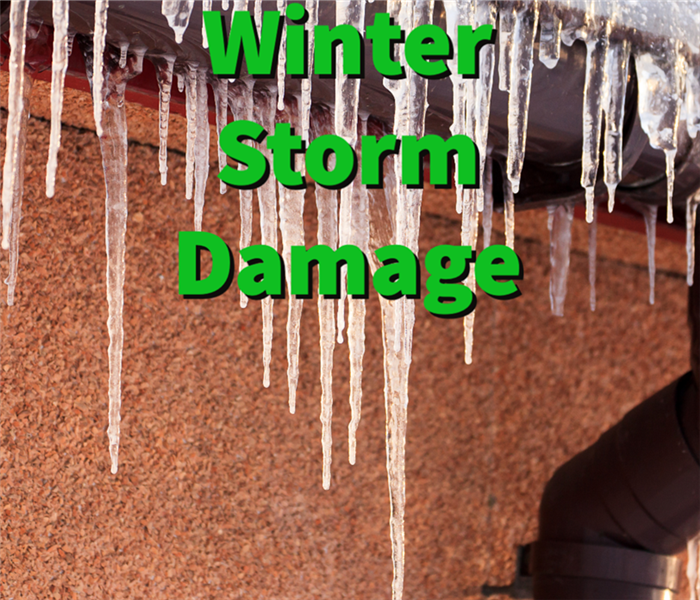 Contact the professionals at SERVPRO for winter storm damage repairs!
Contact the professionals at SERVPRO for winter storm damage repairs!
Winter storms can cause a lot of damage to your home.
Winter storm damage is a known culprit that causes many problems for homeowners. Not only can the weather be hazardous, but it can also lead to costly repairs. To protect your home from winter storm damage, you need to take some preventative steps before the storm hits.
The professionals at SERVPRO of Union, Towns, Fannin & Gilmer Counties know winter storms' impact on residential properties. Winter storm damage is typical in any storm that consists of wind, ice, snow, or sleet.
In the following blog post, we will go over preventative measures you can take before the storm. Then, we will follow up with actionable steps to take when your property does get hit by winter storm damage.
Protecting your home from a winter storm
There are five things you can do before the storm hits that will help protect your home from damage.
- Clear any snow or ice from your roof, as these elements could cause the roof to collapse.
- Clear any dead trees near your house. Dead trees can fall and damage your home during a heavy winter storm.
- Remove ice dams from the gutters. Ice dams occur when water accumulates and freezes on top of the roof and melts and refreezes over time. This process causes ice buildup around the dam at the eaves.
- Trim back any tree branches that are close to your house. Branches can snap during heavy winds and puncture holes in the siding of your home, or damage windows.
- Clean your gutters and downspouts so that water can flow freely away from your house.
Restoring winter storm damage
If your home does get damaged, it's essential to act quickly. The faster you address the damage, the easier it will be to repair.
When your property has winter storm damage, the first step is to contact a reliable restoration company. The team at SERVPRO of Union, Towns, Fannin & Gilmer Counties are experts in dealing with storms and water damage.
After you contact your restoration contractor, you will want to get in contact with your insurance adjuster to let them know about any damage.
The next step will be to determine what caused the winter storm damage. For example, was the damage caused by a fallen tree limb breaking windows or punctured holes in your siding, or water damage caused by a melted ice dam, or maybe the damage was caused by too much snow built up on your roof. No matter what kind of winter storm damage your home suffered from, it is essential to know how the damages happened in the first place for insurance purposes.
Next, it will be essential to document winter storm damage. As a homeowner, you will want to take pictures and videos of the damage to your home and its surrounding area. The documented images and videos will support your insurance claim.
If you follow the above steps, you will be in a great place to get your property restored promptly.
Final thoughts
Winter storm damage can be costly and devastating if not handled quickly and adequately. Taking proper precautions before a storm hits can help protect your home from costly repairs.
When it comes to winter storm damage repairs, you can rely on the professionals at SERVPRO of Union, Towns, Fannin & Gilmer Counties. All of our professionals are IICRC certified, which means you can have confidence that we follow industry best practices to restore your home to its pre-storm condition.
Contact us any time for more information about winter storm damage. All our crews are available 24/7 for storm damage restoration services.
3 Great Gutter Snow And Ice Buildup Prevention Tips
12/24/2021 (Permalink)
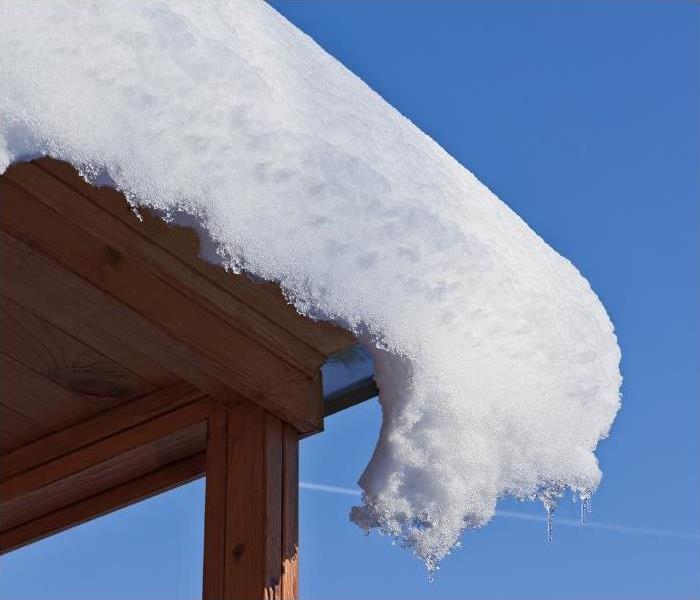 Contact the professionals at SERVPRO for emergency winter storm repairs!
Contact the professionals at SERVPRO for emergency winter storm repairs!
Is your gutter system equipped for the winter weather?
Winter has arrived, and many property owners will be looking to prepare for winter weather, including preventing snow and ice buildup in gutters.
The professionals at SERVPRO of Union, Towns, Fannin & Gilmer Counties have seen severe damage from snow and ice buildup. Snow and ice buildup might not seem like a huge issue, but it will be when water begins to enter the property.
We've put together the following blog post to keep ice and gutter debris from accumulating this winter. By the end of the post, you will have learned three tips to prevent snow and ice buildup and how the professionals at SERVPRO can help if your gutters become damaged from a winter storm.
Winter gutter inspection
Property owners must have their gutters inspected every few weeks to ensure no debris is built-up during the winter months. When inspecting the gutters, the property owner should look for any signs of gutter system damage that might have occurred, including:
- Gutter system leaks
- Cracks
- Missing pieces
Gutter snow and ice buildup prevention tips
The best way to avoid costly repairs from overflow or damage is by being proactive about keeping your gutters clean before they get clogged with heavy snow, sleet, and ice accumulation. We recommend three tips below on how property owners can protect their gutters from snow and ice buildup this winter season.
Tip #1: Remove debris
Remove leaves and branches from gutters before the first winter weather event. Leaves will stay moist during the winter months and eventually accumulate to form ice.
Fallen tree branches can cause damage to gutters if they settle in the gutter or on top of it. To ensure that tree limbs do not clog the gutters, homeowners should make sure to check and remove them at least once a month.
Extra advice: Consider installing a gutter guard system that will prevent leaves, twigs, and other debris from clogging up the gutters.
Tip #2: Install gutter heat tape
Gutter heat tape can significantly reduce the amount of snow packed in gutter areas. Ice dams will form when too much water is sitting inside a gutter system, leading to water intrusion. Installing gutter heat tape will keep the water inside the gutter system warm and have proper drainage.
Gutter heat tapes are readily available at most home improvement stores, but professionals must install them for maximum performance.
Tip #3: Trim surrounding trees
Trees close to buildings can become heavy with snow and ice, posing a risk to the roof structure, including the gutter system. To avoid this, customers should check the trees around their property and remove any branches directly above the gutter system.
SERVPRO is here to help
We hope you enjoyed learning about the best ways to protect your gutter system from heavy snow and ice buildup this winter using the three tips stated in this blog post.
In addition to the three tips, we want our customers to know that they can contact our professional restoration company at any time if they notice damage to their gutters following a winter weather event. The professionals at SERVPRO of Union, Towns, Fannin & Gilmer Counties are here to help and have the availability to repair and replace a damaged gutter system.
As well, our IICRC trained professionals will be able to assist in the cleanup and restoration process if a winter storm has damaged your home or business.
Please contact us if you have any other questions about preventing snow or ice damage this winter season. We are available 24 hours a day, seven days a week.
Flood Mitigation Services: 4 Great Ways To Control Flood Damage
11/19/2021 (Permalink)
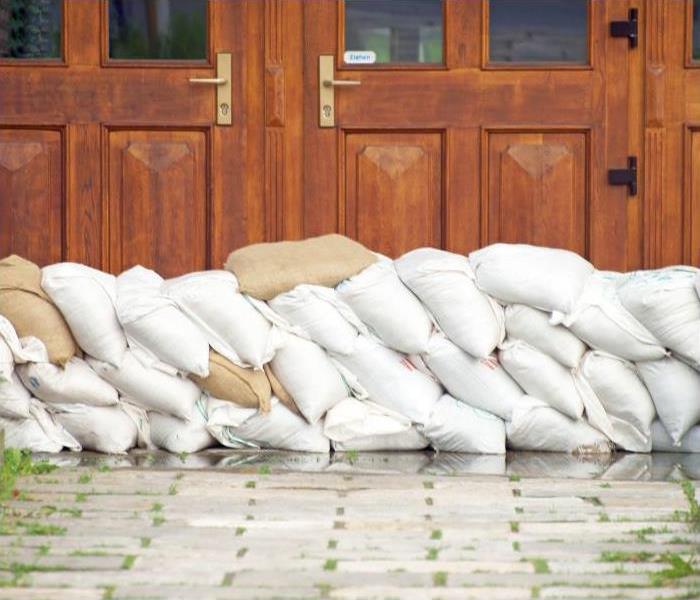 Contact the professionals at SERVPRO for quality flood mitigation services!
Contact the professionals at SERVPRO for quality flood mitigation services!
Being proactive and planning for flood damage is the first step in flood mitigation.
Flood damage can happen to any property owner. It doesn't matter if the property is on a flood plain, near a body of water, or in an area with known high flood potential. The number one way to prevent extensive flood damage to a home or business is to hire professionals for flood mitigation services.
The professionals at SERVPRO have seen flooding cause thousands of dollars in flood damage repairs. The most prone flood-damaged areas in a property are a basement and ground level.
In the following blog post, we'll look at four types of flood mitigation services and further explain why they are necessary for those who want to protect their property.
What is flood mitigation?
Flood mitigation services are the preventive measures that flood damage repair companies take against flood damage before they happen. Flood mitigation is necessary for those who live in areas that experience flooding regularly and want to protect their property. However, no flood mitigation services can guarantee complete flood protection.
How is flood mitigation different from flood restoration?
Flood mitigation is different from flood restoration because flood restoration is removing floodwater after it has already caused damage to a home or business. During flood restoration, an IICRC certified professional will strategically create a drying plan to remove flood water as soon as possible. Once floodwater is removed, and the property is restored, a flood mitigation professional will locate flood-prone areas and protect the home or business from future flood damage.
4 Types of flood mitigation services
There are four main types of flood mitigation services, and they include:
- Sandbagging
- Foundation waterproofing
- Sump pump installation
- Elevating a home or business.
Sandbagging
Sandbagging is the least expensive flood mitigation tactic that involves using sandbags in areas around a property that are prone to flood damage. For example, it is common to see a barricade of sandbags around doors and windows on the ground floor to protect a property from floodwater.
Foundation waterproofing
A flood mitigation professional will use foundation waterproofing tactics to prevent floodwater intrusion into a home or business. Foundation waterproofing is done by adding a waterproof coating to the foundation of a home or business. Foundation waterproofing is recommended for properties that have cracks or holes in their foundation because holes and cracks allow floodwater to seep through easily.
Sump pump installation
Flood mitigation experts will typically recommend floodproofing a property by installing a sump pump, especially when the property is on a floodplain or near a body of water. Sump pump installation helps to divert floodwaters away from a property once water enters.
Elevating the property
The elevation of a home or business is one of the most efficient floodproofing tactics for those who live in flood-prone areas. The whole idea is that rising floodwaters will not flood the home or business because of its elevation status. The elevation of a property will require renovations to lift the property.
SERVPRO flood mitigation services
People call us for flood mitigation services because we are trained to detect any possibility of floodwater intrusion into a property. Our professionals know that flood mitigation is the number one way to prevent flood damage to a home or business.
We hope you enjoyed learning about flood mitigation services and how our professionals can help prevent flood damage before it happens.
When you contact us for flood mitigation services, you can rest easy because you will be in control of any potential flood damage. The team at SERVPRO of Union, Towns, Fannin & Gilmer Counties is available 24/7, 365 days a year for flood mitigation services and flood restoration services.
Roof Storm Damage: 3 Signs You Need Roof Restoration Services
11/12/2021 (Permalink)
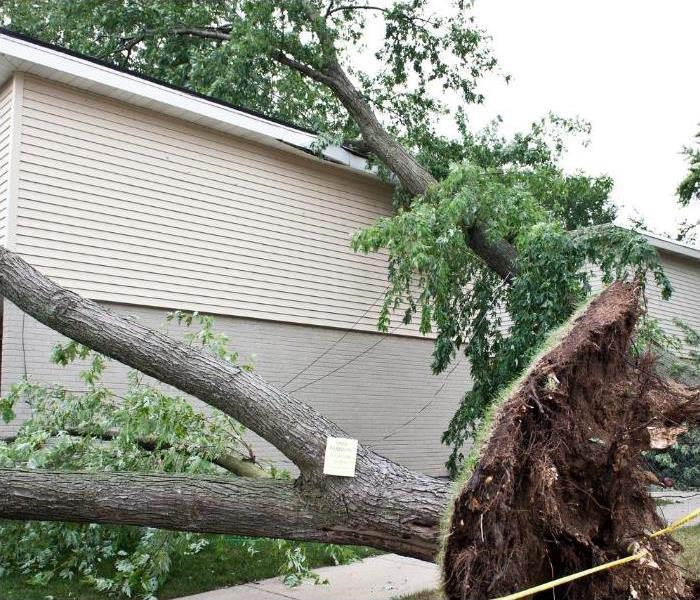 Contact the storm damage professionals for 24/7 emergency services!
Contact the storm damage professionals for 24/7 emergency services!
The professionals at SERVPRO understand the importance of checking for roof storm damage after a severe storm passes.
Roofs serve as the first line of defense against storms, high winds, and other natural disasters. However, some of the most significant storm damage comes from an unseen weakness in a roof's exterior. As a property owner, you want your roof in excellent condition because it plays an essential role in insulation and overall energy efficiency.
In the following blog post, we will be going over three common signs that indicate a roof needs restoration services. You will want to read until the end to find out how the professionals at SERVPRO can help you restore the most catastrophic roof storm damage.
Sign 1: Roof shingles are missing or busted
Missing or busted roof shingles are usually one of the more noticeable damages on roofs after a storm passes. You will notice busted roof shingles often with hail damage but also applies in cases where the roof has been struck by flying debris or even just high winds. Roof shingles are highly durable, but they are also very thin and will be the first thing to show wear.
After a storm passes, it is common to find missing shingles around the property in a garden or backyard pool. Roof shingles should be secure to your roof and should not be found on the ground.
If you notice missing shingles throughout your yard, you need to pinpoint where missing shingles are located and check for other signs of storm damage like water leaks or damaged flashing.
Sign 2: Water damage inside the home
Water damage is not always as easy to spot as other damages on homes, but it can cause significant problems and lead to some expensive damages. A quality roofing system will repel against water and funnel runoff into gutters that take excess water away from the property.
When there is storm damage to the roof, water may seep in through the cracks and gaps between boards, causing the attic insulation to become wet and leading to possible mold growth.
If you notice any signs of water damage in your home, you need to locate the source immediately and prevent further damage from starting. Look for water stains on any level of the house ceilings and feel walls for wet drywall.
Sign 3: Damaged roof flashing
Roof flashing is a thin metal piece on the roof designed to direct water away from certain areas of the home that are vulnerable to water damage. Roof flashing can be located around a chimney, at walls, and roof valleys.
After a storm passes, the roof flashing may be punctured or eroded by water exposure and debris. Roof flashing is installed to keep rainwater flowing away from home, but water can pool and enter the property when there are damages.
SERVPRO roof restoration services
When it comes to storm damage, the professionals at SERVPRO can help mitigate and restore all three of the most common signs of roof storm damage. Roofs are essential parts of a home or business, and when storm damage happens, it is hard to see. SERVPRO has specialized training and will use advanced equipment and techniques to assess your roofing damages and stop further damages from occurring down the road.
If you notice any signs of storm damage on your home, it is essential to contact the professionals at SERVPRO of Union, Towns, Fannin & Gilmer Counties immediately. Roof storm damage can happen to anyone, but the best way to avoid secondary damages will be by calling our team of professionals for roof restoration services.
3 Steps To Recovery After A Storm Damages Your Rental Property
10/15/2021 (Permalink)
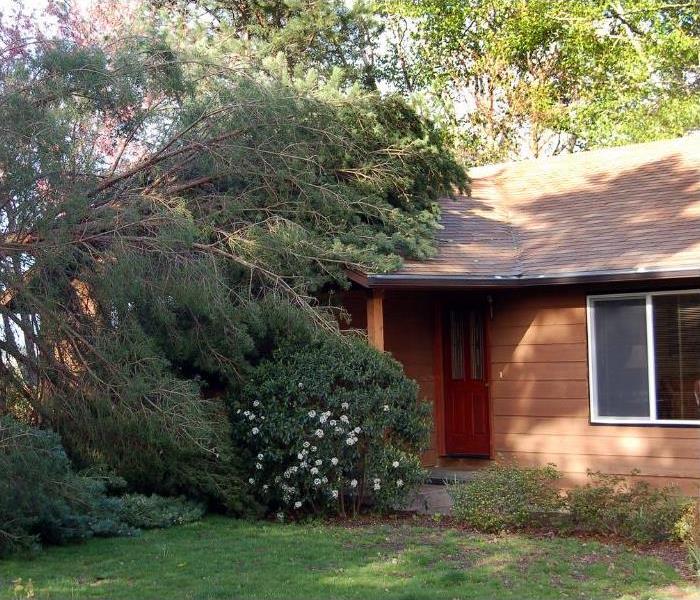 Contact the storm damages professionals at SERVPRO for 24/7 emergency services!
Contact the storm damages professionals at SERVPRO for 24/7 emergency services!
Knowing the best way to navigate storm damages to your rental property is essential, so your tenets stay happy and safe.
The professionals at SERVPRO of Union, Towns, Fannin & Gilmer Counties know how stressful it is to navigate a storm that causes damages, let alone ones that happen to a rental property. For anyone looking to recover from storm damages, we want to ensure that all members involved are safe, and that is why we put together the following blog post.
The best way to prepare is to have a plan in place before a disaster strikes, so you know how to navigate storm damages to a rental property. Continue reading if you are interested in the three most essential steps to take after a storm damages a rental property.
Communicating with your insurance company
Communicating with an insurance adjuster can be difficult right after storm damages occur to a rental property because the insurance company will be busy with multiple claims regarding storm damages in the area. Before your initial call with your insurance adjuster, you will want to:
- Describe the severity of the damage
- Note if the property is inhabitable
- Describe how it impacted the tenants and their belongings
3 Immediate steps directly after the storm damages
As a landlord of the rental property, it is your responsibility to contact your insurance company as soon as possible to start the claims process. Your insurer will most likely want to come out and assess the damages. To ensure that you are well prepared before the property inspection, you will want to take the following three steps:
1) Document the damages: Right after the storm has passed, the landlord's responsibility is to perform an initial inspection of the damages that occurred to the rental. The best way to get started will be by taking pictures and documenting what damages occurred to the rental property. The documentation will be helpful for not only your insurance company but also the restoration professionals you hire for repairs on your rental property.
2) Assess the needs of your tenants: Directly after storm damages, you will want to contact all the tenants that inhabit the rental property. In some cases, you may need to provide temporary housing accommodations if necessary for those who cannot live on-site due to damages. In the meantime, you should advise your tenets to make a claim with their renter's insurance so that they can recover any losses.
3) Avoid further damage: The best way to avoid further damages to a rental property is going to be by being proactive and noticing all compromised areas. Depending on the extent of the damages, you may need to further secure roof or siding damage with tarps and boards to avoid additional damages from occurring before repairs take place. In addition, if there is storm damage to electrical appliances, you should go ahead and shut off all electrical power to prevent any further damages.
Getting an estimate
Estimating the cost of damages to the property and belongings inside the rental is critical in restoring your rental to its pre-storm condition. And no matter how much damage there is, you will want to hire honest and reliable restoration professionals. The restoration experts at SERVPRO can provide you with an estimate for damages and help make sure that everything is restored to its original state.
Please contact us today to learn more about how SERVPRO of Union, Towns, Fannin & Gilmer Counties can help you get back on track with the restoration process.
SERVPRO of Union, Towns, Fannin & Gilmer Counties is a professional remediation and restoration contractor that provides 24-hour emergency service. We are ready to respond immediately to your residential or commercial property for any water, fire, mold, storm damage, or repairs needs.
Siding Damage: 4 Steps To Get Siding Replaced By Insurance
9/24/2021 (Permalink)
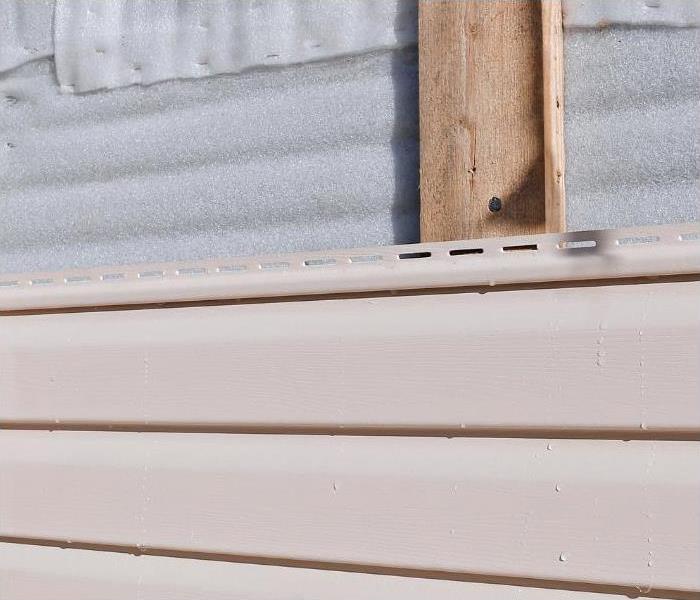 Contact the professionals at SERVPRO for siding repairs!
Contact the professionals at SERVPRO for siding repairs!
Wind and hail are two natural forces that are known to cause siding damage.
The siding on your property is one exterior element that protects the property from outdoor elements. When the siding gets damaged, the home or business will become more susceptible to water damages leaking through the damaged areas.
Damage to the siding can be stressful to navigate. Fortunately, the professionals at SERVPRO of Union, Towns, Fannin & Gilmer Counties have found that insurance companies will commonly cover damaged siding replacement costs. Therefore, we have put together the following blog post to help property owners get their damaged siding replaced by insurance. We will go over the clear signs of wind or hail siding damage and the four steps in getting your siding replaced by your property insurance company.
When to check for siding damage
As a property owner, you want to always ensure that the property is safe from the outdoor elements. The best way to ensure that your property is ready to fight against mother nature is to check the siding for damages regularly, but most importantly, right after a recent storm has passed.
To check for siding damage, you will need to have a reference image of what the siding looked like before any damages occurred. The best reference type will be a video or pictures of the siding when it was in good condition.
There are two signs to watch out for when checking for siding damage:
- Cracks or holes
- Missing planks
The four steps for insurance repairs
Suppose the siding on your property was damaged during a windstorm, hail storm, or another natural force. If this is the case, it needs to be addressed and replaced ASAP so no further damages will occur to the property. The following four steps are the fastest proven way to get your property fixed and covered by a property insurance company.
1) Fast contact: When dealing with an insurance claim, it is best to contact the insurance provider sooner rather than later. The faster that the property owner contacts the insurance company, the faster the claim will get started.
2) Accurate information: Not all siding is alike. Different types of siding require different siding replacement protocols. Knowing the type and color of the siding that received damages will help the insurance adjuster ensure accurate siding is compensated.
3) Documentation: To ensure that the siding damage insurance claim is quickly processed, you will want to provide the property insurance company with pictures and videos of the siding damages.
4) The number to a reliable restoration contractor: Having the number to a reliable restoration contractor is imperative to getting the siding replaced. In addition, the right restoration contractor will know how to communicate with insurance adjusters to ensure that a claim is quickly estimated and approved.
Wrapping up
Wind and hail siding damage can happen at any time without warning. You might be going about your day when a storm blows through, or you might be sleeping soundly in bed on a windy night. Either way, siding damage is not something that people plan for.
We hope you enjoyed learning about siding damage and how to get the claim processed by your property insurance company. SERVPRO of Union, Towns, Fannin & Gilmer Counties is a well-known reliable restoration contractor throughout north Georgia and is available 24/7.
As an IICRC certified firm, we guarantee that all restoration projects are professionally done while focusing on customer satisfaction. In addition, all of our restoration professionals are well trained in using industry-standard equipment and follow insurance restoration protocols.
Please contact us today if your siding has recently been damaged by wind or hail.
4 Distinct Ways To identify Hail Damage
3/26/2021 (Permalink)
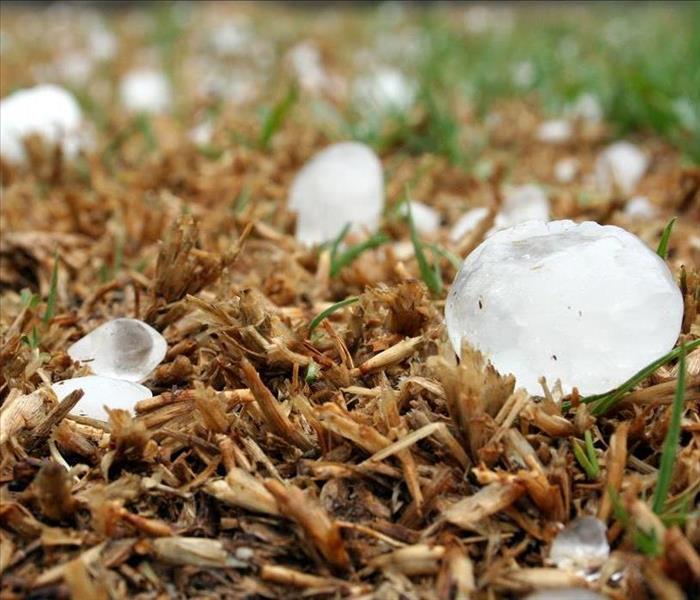 The larger the hailstone the more severe the damages to your property will be!
The larger the hailstone the more severe the damages to your property will be!
Hail damage affects many Georgia homeowners
In the US alone, high-speed winds and hail cost $15 billion last year. Hundreds of homes were destroyed causing many homeowner’s insurance claims. It is important to understand what to do when your property is affected by hail damage because hail damages affect just about everything exterior; your windows, siding, and roof are all susceptible to hail damage.
When inspecting hail damage, you may notice that some hail damage is apparent, such as a broken window or a dented vehicle. Although, other kinds of hail damage are unnoticeable and require a trained professional eye to detect. When you suspect that your property has had hail damage, you will need to have a hail damage inspection to determine the extent of the property damage. A professional will inspect all of the exterior parts of your property and provide an action plan to continue with any necessary repairs.
How does hail cause damage?
Hailstones can cause significant damage to houses, depending on the speed and size when they fall. Hail damage is one of the most common causes of a homeowner's claim every year.
The growing popularity and the use of vinyl siding for house exteriors is one of the reasons for an increase in these claims. Vinyl siding's lightweight design, built to survive high winds, allows it to withstand most weather conditions. However, when massive, fast-falling hailstones strike the panels, the panels will chip or crack. Even minor hail storms may cause significant hail damage to the siding.
One of the more challenging types of hail damage to detect is roof hail damage. Roof hail damage is challenging to detect because it is not possible to see from the ground level. When a roof has hail damage, a home will be prone to roof leaks, water ingress, or shingle deterioration.
4 Ways to identify hail damage
There are some methods for determining whether or not to file a claim after a hailstorm. When it's safe to step outside, pay attention to the following signs that your house has been damaged:
- Downspouts and gutters that have been dented.
- Siding and window sills with buckling, dings, warping, and dents.
- Substantial or irregular gaps across or between siding layers.
- Damage to your patio cover or a wooden deck.
What can hail damage?
You may see hail damage in the form of dents on a home's exterior, but it is not the only kind of hail damage there is. Like the shape, the damage can come in several different forms.
The size of hail damage will cause:
- The size of a quarter: Little exterior damage.
- Half Dollar: Minor damage (Cracks)
- Walnut: Dents wood, severe roof damage.
- Golf Ball: Major exterior damage.
- Tennis Ball: Severe damages to roofing, siding, and breaks windows.
Does insurance cover hail damage?
Homeowners insurance will typically cover hail damage to the roof and other parts of your home. Hail storms can strike just about anywhere in North Georgia. If your home has been damaged by hail, you should seek professional help to determine the damage before filing a claim. The professionals at SERVPRO can help you check your policy for coverage restrictions and submit a homeowners insurance claim.
SERVPRO hail damage professionals
Flood and storm damage can be extremely costly. You need to act quickly, and you need a company that has dealt with all types of storm damage. In the industry, SERVPRO is a renowned company, and it has been serving the clients of North Georgia since 1967. If you want your everyday work life to be normal again after you have suffered hail damage, SERVPRO of Union, Towns, Fannin & Gilmer Counties is the most reliable option for you.
Our SERVPRO IICRC certified team is fully equipped with state-of-the-art tools and has over 20 years of experience restoring storm damage. Your property will be back in a "pre-disaster" state in no time. We offer 24/7 emergency services, meaning you can contact us at any time you need assistance!
It's a Beautiful Day in the Neighborhood
3/9/2021 (Permalink)
It’s a beautiful day in the neighborhood, a beautiful day for a neighbor. Would you be mine? Would you be mine?
There was a movie created that celebrates the life and legacy of Mr. Rogers. It’s starring Tom Hanks and my understanding is that he does an outstanding job representing this kind and gentle man who built his life into our children through the wonderful avenue of television. While I’ll even bet that the jingle is still playing in your mind and you hear the train whistle and bell clanging as it rounds the corner.
While we think of the music, the sweater, the tennis shoes and the train coming around the bend, we can also think of our company, SERVPRO of Union, Towns, Fannin and Gilmer counties. After all, I believe that’s why we are in business. Day after day, we receive multiple calls asking us to rescue those who are in need. Sometimes it’s dealing with water, flooding, frozen pipes, and mold and then sometimes, it’s dealing with the heartbreaking losses of fire and smoke damage. I’ve experienced this trauma myself and can speak firsthand of the devastation that goes with it and I would never wish that on anyone. Many people look at it as a job where I see it as a ministry. Along the way of reassuring our customers that they are in excellent hands we can even make it "Like it never even happened." And we can encourage them emotionally and spiritually as well. Isn’t this a great job?!
So I’m starting my day with a little jingle, “please won’t you be my neighbor?”
Common Damages Caused by Wind in North Georgia
2/12/2021 (Permalink)
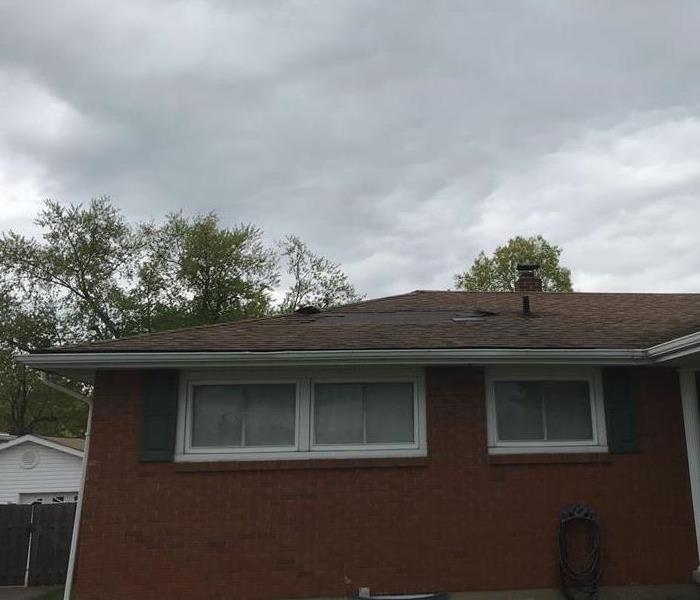 Contact the SERVPRO storm damage professionals today!
Contact the SERVPRO storm damage professionals today!
Damages to our property will depend on how fast the wind is blowing.
For homeowners insurance purposes, it is essential to know that the extent of the damage caused by wind is determined by the wind's speed that caused the damage. Wind speed reaching a minimum of 50mph can cause catastrophic damage. Wind speeds that exceed 50-60mph can lead to substantial destruction to the landscaping and a property's infrastructure.
Here' a more detailed break down:
- Wind speed of 45-57mph is considered non-severe and is associated with slight damage. These wind speeds can break tree branches and cause loose shingles to a roof.
- A faster wind speed of 58-74mph is categorized as severe. It can cause damage to trees by uprooting them, rip off shingles and lead to a damaged chimney.
- Wind speed between 78-89mph can lead to devastating roof damage in commercial and residential properties buildings.
- Wind speeds that exceed a speed of 90mph will cause severely significant damage.
Some of the most common damages are associated with winds faster than 50mph and include the following:
- The uprooting of trees inevitably ends up blocking roadsides and making it nearly impossible to drive on the roads safely.
- Broken tree trunks and debris fly with tremendous energy and impact housing structures and vehicles along the way.
- Significant rooftop damage
- Broken chimneys, windows, gutters, collapsed exterior walls, and blocked drainage systems causing water ingress.
- Damaged air-cooled condensing units and outdoor heat pump units.
What is wind?
Wind is known as the movement of air. It is further categorized into a few other types based on their speed, the type of forces that cause them, and the location they occurred. A faster and stronger wind is associated with a great degree of damage. Infrastructure damages caused by wind can impact roofs, decking, exterior structures, gutters, drainage systems, vehicles, etc.
Gutter damage caused by wind
Wind can cause some degree of damage to gutters, especially to gutter systems that are improperly installed or old. Their shape, angle, and vertical alignment enable them to easily pop out of place. Windblown debris can further blow into the gutters with incredible velocity and cause impact, leading to impairment. Furthermore, larger objects and broken tree trunks can contact the gutter system and dislodge the gutter.
Vehicle damage caused by wind
Damage to vehicles is also commonly seen in storms with strong winds. The damage to the vehicles is generally due to falling bricks or roofing tiles from high wind speeds. Sometimes, a flying tree branch, an uprooted tree, or a detached electrical pole can fall and cause significant harm to the vehicle.
Roof damage caused by wind
Significant rooftop damage is the most common structural damage caused by strong winds. The rooftop damage can be caused primarily by the wind and aggravated by other associated factors such as broken tree limbs, detached billboards, and electrical poles. Rooftop damage is identified by missing shingles, dislodged roofing systems, and punctures in the roof.
SERVPRO storm damage professionals
It is crucial to fix damage caused by storms as soon as possible to lessen the probability of permanent damage and to avoid secondary damages. The professionals at SERVPRO of Union, Towns, Fannin & Gilmer Counties provide a highly trained team with excellent resources that can cater to any size of the damage and will resolve and reverse the damage done.
Water Ingress In Buildings After A Storm
1/19/2021 (Permalink)
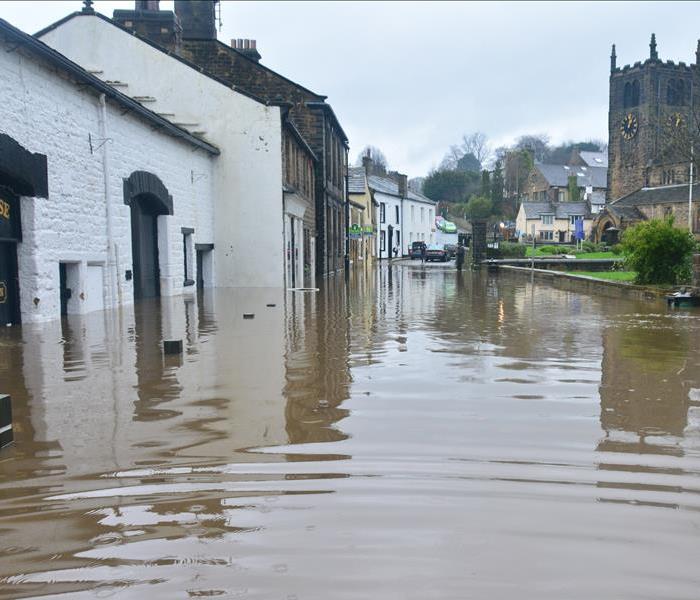 Storms can cause water ingress
Storms can cause water ingress
Call SERVPRO when outside water makes its way indoors!
SERVPRO is a leader in disaster restoration. Our services include water damage, fire damage, and mold remediation.
Water damage can occur for several reasons, including burst pipes, broken appliances, and flooding from natural disasters.
One of the most common types of water damage calls we receive after storms is called water ingress.
What is water ingress?
Water ingress, also known as penetrating damp, is when water from outside infiltrates a property. It happens for various reasons and ways.
Put another way, whenever water passes through walls and comes inside the property, it’s water ingress.
Water making its way into your building or house is something to worry about because it could result in damage and lead to expensive and further problems.
The damage can include fungal decay, destruction of the decoration, and long-term mold issues associated with dampness. These can have a negative and drastic impact on your health and lifestyle; therefore, preventing water ingress is crucial. The solution? Contact a local water ingress expert like SERVPRO.
Causes of water ingress in buildings:
There are several reasons for water ingress. Here are some of the most common:
- Damaged Walls - deteriorated wall results in seals between mortar and brickwork becoming porous; this allows water through the wall, otherwise known as water ingress.
- Defective or leaking drainage - cracked, blocked, and defective downpipes with faulty seals are one of the main reasons for penetrating damp and water ingress.
- Roof damage - Any missing shingles or defective seals will allow water ingress. Roof maintenance and inspection are essential in identifying broken or missing tiles or seals to prevent this water entryway.
- Leaky basement window seals - if there are broken or damaged seals around basement windows, the waterproofing capabilities are diminished, and water will likely ingress into the building.
- Flash Flooding - If your residency is in an area where floods are common, then the large volume of water is a common factor for resulting water ingress
In short, defects in the building, such as cracks, put your property at risk of water ingress. Water ingress risk increases with a large volume of water from flash floods or storms.
Where can water ingress?
Water ingress in basements, cellars, and roofs has the greatest chance of occurrence in any property.
If you’re going to assess where water ingress has a chance for developing on your property, you should look at these common signs:
- Plaster peeling off the wall
- Damp, musty smell in the attic or basement
- Mold growth on any wall
- Damp patches on any wall
- Visible water in basement or attic
Type C waterproofing systems are widely known and used to drain out the water safely from the property. If you suspect your waterproofing system is damaged, contact a waterproofing specialist like SERVPRO. We deal with all kinds of queries and are here to serve and assist you.
Water ingress mitigation
In mitigation, you first need to assess the situation. The most crucial stage to treat the water ingress is to check the dampness and determine the water’s source. After the assessment, professionals must remove moisture and water from your property from both the structure and air itself. The last step of the mitigation process is the restoration and sanitation of the property to return to a healthy and safe condition. Trust the professionals at SERVPRO to determine the cause of the situation and provide the necessary steps for repairs.
Regular checks will help ensure that building defects will not be hazardous and stop the water from making its way into the property. Efficient and fast clean up is crucial; we have water ingress mitigation specialists to help your business get in the pre-disaster condition and become fully operational again.
Suppose you’re struggling with any damp related issue or water ingress. In that case, SERVPRO is the preferred water restoration vendor for many insurance companies. They will help you diagnose and identify the solution so you can be free from water ingress and dampness-related issues.
Water mitigation is an essential part of restoring your property. Address any water damage signs as soon as you spot them—this will save you from long-term hassles, time, and further costs. SERVPRO specializes in drying, cleaning, restoring, and sanitizing your property. Contact us if you’ve noticed water ingress at your office, business, or home. We are here to assist you!
Does Homeowner’s Insurance Cover Wind Damage?
1/18/2021 (Permalink)
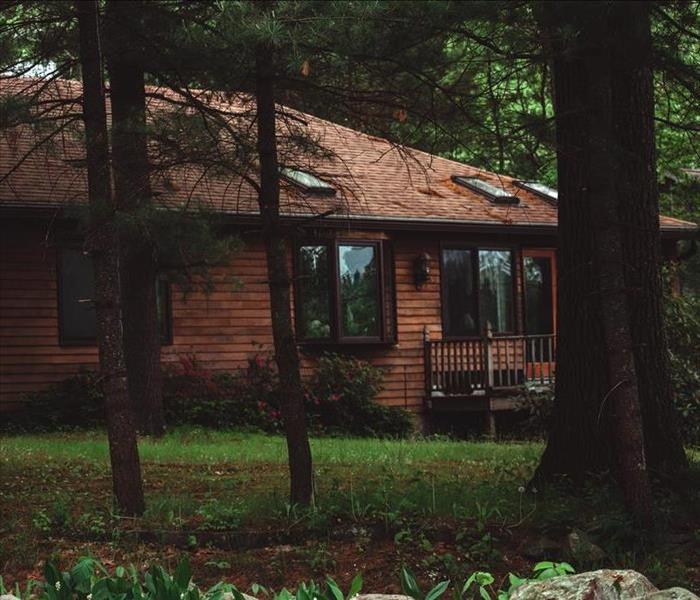 High winds can cause trees to fall on your home.
High winds can cause trees to fall on your home.
Properties in Blue Ridge GA Are Susceptible To Wind Damage
Among all the extreme weather events, high winds are at the forefront of Blue Ridge’s weather challenges. A report that counted weather events from 1950 to 2010 shows how thunderstorm winds and hail winds have remained a source of great distress for its residents over the decades. In Blue Ridge, wind damage mitigation is a service used to identify wind damages to property structures.
While high winds and gusts of cool air are a blessing in stifling Georgia summers, they can quickly turn into something far damaging in adverse weather conditions. Your property and the wildlife around you are at risk when you are facing severe wind currents.
Before we get into the technicalities of homeowners insurance and how SERVPRO can mitigate wind damage to your property, there are few things that you need to know about wind damages.
What Damage Can Wind Do?
Your Blue Ridge house can suffer a varying degree of damages depending on the speed of the winds. Roofing is the first sign of wind damage. After non-severe winds (ranging from 45 to 57 mph), you may notice loose shingles. Wind damages become severe when their speed exceeds the 58-mph mark. The structure of your property will go beyond a few loose shingles at extreme wind speeds. High winds can rip off perfectly fitted shingles as well as uproot the trees around your house. The damages up until winds at 58mph are still sustainable, but higher wind speeds will result in hefty repairs.
How To Identify Wind Damage?
You can hire a professional at SERVPRO to inspect your roof for any wind damages though there are clear indicators that will show you whether your roof is suffering from wind damage or not.
- Chimney damages: Chimneys can show clear signs of wind damage when there are missing pieces.
- Roof Damages: Clear signs of roof damage are curling, peeling, and loose or missing bits and pieces from your roof.
- Siding Damage: Like roof damage, siding damage will show peeling and loose or missing bits and pieces from your property's siding.
Depending on your house’s roof type, you’ll have to look for different materials missing from your house's structure. Common home materials in Blue Ridge, Georgia, include shingles, bricks, and asphalt. Damaged granules essential for roofs with shingles are often the cause of making them lose their grip. Inspecting drains and ventilation systems for roofing granules might be a good start to identify wind damages in your house’s roof.
Another thing that should be a dead giveaway for roof wind damages is water leakage caused by missing or loose soffit and fascia. Water damages are the precursor of wind damage, especially when your home has ceiling leaks.
SERVPRO Helps With Insurance Claims
Different insurance companies cover different types of house damages in their agreement. There is no standard answer that can be universally applicable for all insurance policies. You need to consult with your homeowner insurance company to determine whether they cover wind damage to your Blue Ridge property.
Almost all insurance policies cover basic house damages, especially those caused by extreme weather events. However, keep in mind that some policies include a clause or two against damages caused by “natural disasters.”
SERVPRO cannot help you with your insurance coverage's legalities, but we can help you file your homeowner insurance claim. Everything you might need from damage estimates, cost of repairs and initial inspections will help you get your homeowner's insurance claim processed quickly.
Your property needs to be inspected and taken care of after a windstorm. Call the IICRC certified professionals at SERVPRO of Union, Towns, Fannin & Gilmer Counties to inspect your property after a severe wind storm to prevent a water damage disaster.
How To Prepare For A Storm?
12/7/2020 (Permalink)
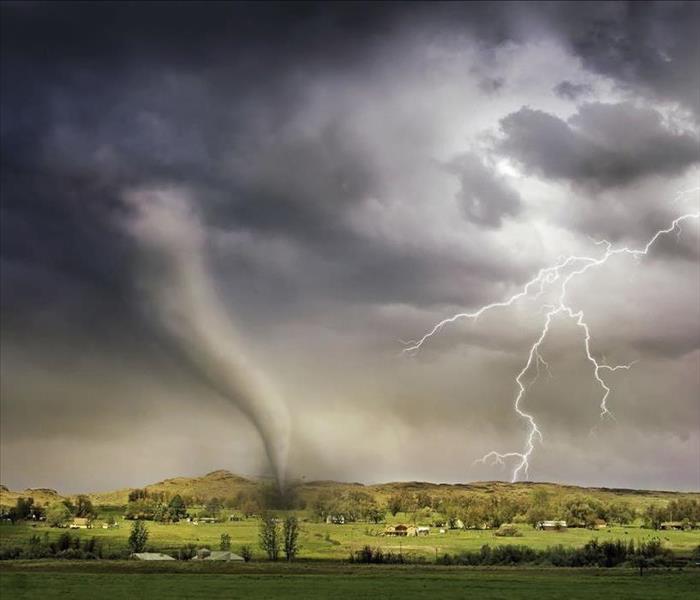 SERVPRO is available 24/7 for storm damage repairs
SERVPRO is available 24/7 for storm damage repairs
Preparing for a storm will save you time and money.
Tropical storms, tornadoes, floods, hurricanes, and other natural disasters can do a significant amount of damage to local communities and businesses. The sad part is, no one can control or prevent any of these acts of God. However, you can take some storm preparation precautionary measures to make sure that the losses you suffer are minimal. However, even if you spend days preparing for a storm, your home may still suffer from storm damage; in this case, you should consider hiring storm damage repair experts when your home suffers from storm damage.
Preparing For A Storm
Every year, natural disasters cause billions in damage in the United States. However, with some storm preparation, you can minimize the loss and protect your loved ones. If you live in an area with a lot of flooding, you can consider getting flood insurance so you can file a homeowners insurance claim to cover damages when the worst happens.
Now, you might be wondering what you can do to minimize the damage a storm may cause to your property. Well, here are some of the storm damage preparation measures you can take to save yourself from complete devastation.
Create A Storm Safety Plan
The first part of storm preparation is creating a storm safety plan is to gather all the members of your household and decide who will handle what. Details of the storm plan will delegate who is responsible for doing things like turning off the electricity and gas supply when a storm hits. An essential part of the storm safety plan will be setting an emergency meeting point such as a park nearby or any other landmark close to your home.
Lastly, it will also be wise to assign a relative who lives out of the state to be your family's emergency contact when severe storm damages strike. A storm safety plan may be time-consuming, but it will minimize safety risks, which is way more valuable than personal property.
Storm Emergency Kit
To prepare for a storm, make sure each family member has an emergency kit that contains all the essential items for survival. Ensure that each family member keeps the emergency kit in an area that is easily accessible. The following emergency kit checklist aims to have all the essential items when evacuating from a storm.
Storm Preparation Emergency Kit Checklist.
- Battery-powered flashlight
- Portable battery-powered radio
- Extra set of batteries
- First aid kit
- List of emergency contact numbers
- Water bottles
- Cash and/or credit card
- Important papers such as ID and bank information
- Sturdy boots
- Essential medicines and prescriptions
- Whistle or any other similar thing to signal for help
With all these things in an emergency survival kit, you will be prepared to keep yourself safe during a storm, even if you have to leave your home.
Four steps to protect your property from storm damage
Here are some steps you can take to protect your property from a lot of damage. Although depending on the storm's size, there is a chance that these steps will not help.
- Cover the windows with plywood or storm shutters.
- Clean out the rain gutters to prevent flooding inside your home.
- Tape the windows to prevent the glass shards from dispersing all over the place.
- Learn to properly sandbag your home if you live in an area with a lot of flooding.
Why Is It Essential To Prepare For A Storm
As mentioned earlier, a storm is something that can not be prevented by anything. If it were possible, the US wouldn't face billions in damages every year. But, you can still take some simple steps to minimize the storm damage loss. You and your family will most likely recover quickly from storm damage if you decide to follow the storm preparation steps in this blog.
Please remember that you and your family's safety is the number one priority in preparing for a storm. Once you are safe after a storm, you should address all the damage that had occurred to your property and call restoration professionals so you can start living on your property as you were before the storm damages occurred!
Call us at (706) 896-1880
Who to Call for Blue Ridge Gutter damage After A Storm Passes
10/26/2020 (Permalink)
 We're Highly Trained Storm Damage Specialists
We're Highly Trained Storm Damage Specialists
Here in Blue Ridge, we have seen weather cause a wide array of issues for roofs and gutters.
Most homeowners in Blue Ridge make the common mistake of not examining their homes or businesses' roofs after a severe weather event occurs. This common mistake could cost you a lot of money in the future.
Rain, snow, hail, sleet, and high winds have the potential to cause gutter damage. Some gutter damage is easy to spot, like fallen downspouts. But not all storm gutter damage is easy to spot. Gutter damage can be hidden entirely from ground level; if it goes unnoticed, it can cause problems later to your home's interior.
What is Gutter Damage?
After a massive storm, wind and heavy rain may loosen and bend gutters and downspouts. Here at SERVPRO, we have seen countless damaged gutters, especially if they are older, in poor condition, and not securely attached. Heavy rain can also wash debris and dirt into your gutters, causing a potential clog. Once the gutters of your home become clogged, they no longer carry water away from the roof. When the gutters stop doing the job that they are designed to do, there is a potential for backup and water damage to the roof or interior of your Blue Ridge home. After a storm passes, it is essential to have your gutters and roof inspected because the heavy debris's weight can cause your home gutters to sag.
Home Damages Caused by Malfunctioning Gutters
Here are typical types of damages to watch out for after your gutter system fails.
After a storm passes and your gutter system breaks down, check the ceilings of your home for water spots. Water spots look like damp rusty-colored rings on the ceiling. The discoloration is usually the sign of a roof leak caused by damaged gutters. Contact SERVPRO ASAP to avoid further problems that can become more expensive as the leak worsens and spreads.
Rain, snow, and other forms of long-term moisture from severe weather can create expensive repair issues as well if your gutter system is malfunctioning. The water damage professionals at SERVPRO have seen flood damage appear on the walls near where the roof meets the home. After multiple weather event occurrences, moisture can build up in the walls of your home. Prolonged repair to damaged gutters may cause flood damage to the interior of your home.
In more severe cases where a homeowner does nothing to fix the damaged gutters, we have seen mold developed in areas of the home. Mold damage is typically due to the home not being protected from moisture. Your home gutter system is designed to remove rainwater far from your home.
As you have seen, here in Blue Ridge, severe weather events are more than a rare occurrence. Having secure gutters is essential to protect your home and your valuable assets inside. It is a good idea to get your gutter system inspected to catch potential issues. When issues are found by a SERVPRO professional, they will offer you a detailed plan of action to repair the damage early on to save you money down the road.
It is always a good time to get your roof inspected even if you do not think there is an issue. SERVPRO of Union, Towns, Fannin & Gilmer Counties can provide an inexpensive, professional assessment of your roof, rain gutters, attic, and all other related parts that make up the home's protective shield.
If one of our certified professionals identify storm damage to your home, you will get a written estimate for repairs. While we are performing your estimate, it will be a good idea to contact your insurance company and file a claim. We will work with your insurance company to ensure that you are reimbursed for the storm damage repairs. We know what insurance companies look for in property damage claims. We will provide photos and a detailed estimate for your insurance provider.
Contact SERVPRO
SERVPRO will come out and inspect your damaged gutter system. Our SERVPRO restoration professionals are highly trained by the IICRC and will walk you through every part of your gutter damage job.
Category 3 Water Remediation - 5 of The Most Common Sources of Category 3 Water
10/19/2020 (Permalink)
 We have the resources to handle fungi and bacteria caused by storms and disasters!
We have the resources to handle fungi and bacteria caused by storms and disasters!
Category 3 water remediation occurs because category three water is grossly contaminated with pollutants, including fungi and bacteria.
SERVPRO understands the stress and questions that come with a category 3 water loss. The SERVPRO goal is to quickly assess the level of contamination your property has endured and advise you on the best course of action to move forward.
The information in this blog post is intended for any homeowner that has recently undergone a water damage loss and has questions about category 3 water remediation.
Category 3 water is nasty contaminated water and can contain pathogenic, toxigenic, or other harmful agents. Dirty water can carry silt, organic matter, pesticides, heavy metals, regulated materials, or toxic organic substances.
Please note that no two water losses are alike, and each category 3 water remediation will be treated depending on the unique needs of the damaged property. Category 3 water remediation needs to be handled by professionals who have attended an IICRC WRT Class, an IICRC ASD Class.
Causes of Category 3 Water Remediation?
Category 3 water damage can occur when highly contaminated black water damages a property. There are significant health risks as well as a high chance of injury associated with category 3 water remediation. There are different causes of category three water losses. The professionals at SERVPRO know the most common causes of category three water losses are sewage backups. A sewage backup creates a nasty mess, but this type of water loss is not the only source of unsafe, dirty water. Another common dirty water type comes from flash floodwaters. Flash floods are known to push organic and chemical contaminants into the house. Outside of these two causes, there are also five other leading causes.
5 of the most common sources of Category 3 water include:
- Broken sewer lines
- Backed-up sewer mains
- Extended rain events
- Ground surface water
- Hurricane flooding
Did you know a small toilet overflow can cause Category 3 damage?
It's because dirty water deposits bacteria will damage the floor, baseboards, and surrounding bathroom fixtures.
How Does Dirty Water Spread?
In all of our category 3 water remediation jobs, we have found that the porous surfaces become a breeding ground for pathogens and fungus. Humidity, temperature, and stagnant air in a flooded home will create an ideal environment for bacteria and fungi to grow.
A Deeper Understanding Of Category 3 Water Remediation
To further clarify the risks involved in cleaning up this type of damage, we are going to list what diseases are affiliated with improperly handling a category 3 water loss:
- Hepatitis B and C
- Norovirus
- Tetanus
- West Nile virus
- Tuberculosis
- HIV / AIDS
As you can see, any type of category 3 water can pose serious health risks.
What To Do During A Category 3 Loss?
When you suffer from a category 3 water loss, it's best to call a professional restoration company that is certified in handling Category 3 contamination. It is essential to hire highly trained technicians who adhere to strict OSHA and EPA standards.
We Specialize In Category 3 Water Remediation
SERVPRO professionals use specialized water damage equipment to sanitize, dry, and repair affected areas. As you learned today, trying to perform category 3 water remediation by yourself isn’t a good idea. SERVPRO of Union, Towns, Fannin & Gilmer Counties is available 24/7 to help you with any water loss.
3 Common Flood Types Caused By Chattahoochee River flooding
10/5/2020 (Permalink)
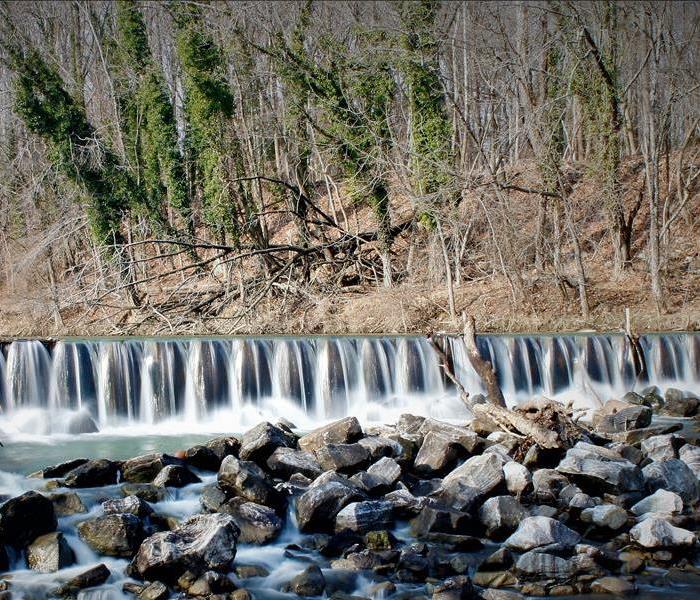 We offer 24-Hour Emergency Services
We offer 24-Hour Emergency Services
Chattahoochee River flooding has caused thousands of dollars worth of flood damage to homeowners each year.
Floods are known to cause damage to any property in a flood zone. In this post, you will learn about the various types of floods and how they can affect your property.
SERVPRO knows first hand that water damages come in all shapes and sizes. The most severe water damages fall under a Category 3 water damage. A Category 3 water damage, also known as "black water" damage, includes rising flooding, seawater, sewage water, and river water. These water losses require quick action to mitigate any potential health risks.
Chattahoochee River flooding can occur quickly or slowly, affecting prominent flood zone areas and those that appear completely harmless in dry weather.
How can floods affect your Georgia Property?
Water damage from flooding produces potential health and safety risks if the water is not immediately cleaned up, including:
- Structural damage
- Electrical damage and risks
- Sanitary hazards and diseases from standing water
- Defunct drainage and sewage systems
- Destruction to roads and bridges
- Landslides
Although flooding in northern Georgia does not occur often, it is still something that needs to be considered. SERVPRO is here to help with any flooding from the Chattahoochee River, Toccoa River, and Ocoee Rivers.
3 Types of Chattahoochee River flooding Damages
Chattahoochee River flood stage is characterized by the size of riverbank overflows caused by extensive rainfall over an extended period of time. Most structural damages occur when a property is located in a flood zone and undergoes mass amounts of rainfall.
Outside of rising waters from the Chattahoochee River, we have seen the following three types of flooding also occur:
1. Flash Floods
Flash floods are caused by heavy rainfall or when snowfall thaws quickly. Flash floods are typically known to be fast-moving waters that sweep anything that comes in their path. A typical flash flood usually covers a small area lasting around six hours or less. Flash floods have the capability to move large objects such as cars, rocks, and trees. It is essential to have a local water restoration number when a flash flood occurs near your property.
2. Pluvial floods
Pluvial flooding is similar to urban flooding, but it mainly only occurs in rural areas. These floods form in flat areas where the terrain can’t absorb the rainwater, causing puddles and ponds. Pluvial floods have a severe effect on agriculture, causing many damaged crops.
3. Urban floods
Urban floods occur when the drainage system in a city or town fails to absorb the water from heavy rain. An urban flood will result in water flowing out onto the street, making transportation very dangerous. The average water levels of an urban flood is a few inches deep, but they cause significant structural damage.
Conclusion
Chattahoochee River flooding can cause severe flood damage to properties, but there are many ways to prevent it. Contact SERVPRO today to come out and evaluate your property and see how you can protect yourself from Chattahoochee River flooding. The SERVPRO restoration professionals are highly trained by the IICRC. Flooding is not something that should be taken lightly that is why we suggest to all of our local residents to have a flood plan in place.
More on the Chattahoochee River
Call us at (706) 896-1880
Do You Have "4" Knowledge?
3/10/2020 (Permalink)
There’s been a fire at your home or business. Once the firemen leave, your first inclination may be to go inside the structure to see what’s salvageable and start the cleaning process. But cleaning up after a fire is much more complicated than regular cleaning. It’s also very dangerous. Because once the last flame has been snuffed out, the dangers from a fire linger.
Soot Hazards
Since fire destroys all materials, the soot that covers everything you touch and that you kick up in the air is full of toxic substances. That’s why the highly trained professionals at SERVPRO of Union, Towns, Fannin & Gilmer Counties wear heavy duty personal protection equipment (PPE) on fire mitigation jobs until all the soot is removed. Here are some of the poisons found in the soot and ashes of a building fire:
- Mesothelioma (cancer) causing asbestos fibers from building materials
- Carbon materials can produce carbon monoxide, ammonia, and nitrogen oxides
- PVC can create hydrogen chloride, phosgene (used as a chemical weapon during World War I), dioxin, Refrigerant-40, bromomethane (a pesticide), etc.
- Hydrogen sulfide and sulfur dioxide (poisonous gasses)
- Petroleum based items can produce formaldehyde, acrolein, furfural, cresols, and other harmful chemicals
- Even wood smoke releases more than 100 chemicals also found in cigarette smoke
Removing the Odors
One of the main aftereffects of a fire are odors. These can be difficult to remove without professional know-how and equipment. For instance, did you know that four factors (The Four S’s) can impact the strength of fire odors? Those are:
- Size - The bigger the fire, the more objects have burned, and thus there’s been more smoke.
- Span -The longer a structure has been exposed to smoke, the more deeply odor has seeped into porous materials.
- Space - When a fire occurs in a smaller room, the smoke odor becomes more intense and concentrated.
- Stuff - Not all odors are equal. For instance, burning wood, plastic and protein, all emit different smells with varied consistency.
SERVPRO of Union, Towns, Fannin & Gilmer Counties has the knowledge and equipment to eliminate the diverse and pungent odors that occur after a fire. Besides the easily accessible areas, we also examine wall cavities, duct work, crawl spaces and plumbing chases to establish whether they also suffered any smoke or fire damage. We’ll ensure that they’re cleaned, repaired and that all traces of odor are removed.
So as tempting as it may be to rush back into your fire damaged home or business once the fire is out, play it safe and call SERVPRO of Union, Towns, Fannin & Gilmer Counties so that we can safely make it “Like it never even happened.”
National Preparedness Month
9/28/2019 (Permalink)
SERVPRO Industries, LLC, is once again proud to be a member of the National Preparedness Month Coalition and is committed to helping the U.S. Department of Homeland Security in their efforts to promote the importance of preparedness planning.
What does it mean to be prepared?
For FAMILIES, it means households have an emergency supply kit so they can be self-reliant for at least three days in case of emergency, and they have a plan for how they will respond and reconnect after an emergency.
For BUSINESSES, it means employers have planned for how they will survive a disaster; they've backed up critical information, developed a plan for assisting employees on site, established a call tree to account for employees, and identified back-up sources of power and supplies.
For SCHOOLS, it means schools and districts have developed, implemented, and communicated crisis plans.
Being prepared means staying informed, knowing how to get information and alerts from local emergency management agencies, and understanding the specific risks in your community and preparing against them.
How To Choose Water Damage Restoration Services
9/27/2019 (Permalink)
When a storm leaves a home flooded, or a burst pipe causes serious issues in the house, getting water damage restoration services from a respected company should be considered a top priority. Unfortunately, this industry is not regulated, and there are people out there who pose as professionals or overstate their qualifications. Therefore, homeowners should be mindful of who they hire, as an untrained technician may do more harm than good or delay repairs, resulting in a higher degree of destruction. Before selecting a company to handle the job, keep in mind these points of emphasis:
· Only choose certified professionals to perform water damage restoration services. Even though the industry is not regulated, technicians who have received certification have made the effort to get the best training possible, proving that they take their job seriously. Certification through the Institute of Inspection, Cleaning and Restoration Certification (IICRC) is a sign that a professional has received the most up to date training and is knowledgeable in the latest techniques and technologies employed during repairs. The IICRC operates a Certified Firm registrant-only database on its site, making it easy to find a local, certified professional without trouble.
· Do not select a technician based only on the price or an insurance company’s recommendation. When possible, speak to neighbors or friends who have had to hire a technician recently and try to get a recommendation from them. Insurance companies often select a restoration company based on price, and unusually low pricing suggests the company does not use modern drying or repair methods.
· Choose a company that offers a range of water damage restoration services. The easiest way to determine the expertise of a firm is to see if they provide a full range of options for homeowners. Mold remediation, for example, is often needed given how quickly mold can set in. This is a standard field of knowledge that advanced technicians should possess. If a company doesn’t offer mold remediation, it may not be prepared for all job settings.
· A company that is available 24/7 is a good sign. Stay away from any firms that are reluctant to start right away. In many cases modern equipment can enable near-complete drying in as little as 36 hours, although many situations require longer. Also, a homeowner should not have to wait before repairs begin. Every minute counts when there is standing water present, and reputable professionals understand this. If a technician insists on waiting to begin the remediation portion of the loss, they probably cannot be trusted to see the job through in a reasonable timeframe.
Using these guidelines, a homeowner should be able to find a technician that can be trusted and is equipped to do the job the right way. A storm or other disaster is hard enough to deal with, and a remediation firm should do everything in its power to make this difficult process easier.
http://www.IICRC.org
What to do in a Flood
9/21/2019 (Permalink)
Floods are one of the most common and widespread natural disasters in the United States, causing more damage than any other weather-related disaster. The location of your home or business has little to do with your risk factor for flooding. Just because you haven’t experienced a flood in the past, doesn’t mean you won’t in the future. According to the National Flood Insurance Program (NFIP), 20% of all claims were for policies in low-risk communities. Floods cost an average of $3 billion in annual losses with the average Commercial claims being $75,000,000.
The American Red Cross (ARC) offers the following flood safety tips:
Stay away from flood waters. If you come up on a flowing stream where the water is above your ankles, stop, turn around and go another way. Six inches of swiftly moving water can sweep you off of your feet.
Do not try to drive on a flooded road. If you approach a roadway that is flooded, turn around and go another way. If you are caught on a flooded road and the water is rising rapidly, get out of the car and get to higher ground. Most cars can be swept away by less than two of moving water.
Keep children out of the water. Children are curious and lack judgment about running water and contaminated water.
That’s pretty basic…so here are some less well known tips to keep you safer in a flood!
- If you have time, secure your home. Bring in outdoor furniture. Move essential items to an upper floor.
- Do not walk through moving water.Use a stick to check the firmness of the ground in front of you.
- Turn off utilities at the main switches or valves if instructed to do so. Disconnect electrical appliances. Do not touch electrical equipment if you are wet or standing in water.
- Six inches of water will reach the bottom of most passenger cars causing loss of control and possible stalling.
- A foot of water will float many vehicles.
After a Flood
- Listen for news reports to learn whether the community’s water supply is safe to drink.
- Be aware of areas where floodwaters have receded. Roads may have weakened and could collapse under the weight of a car.
- Clean and disinfect everything that got wet. Mud left from floodwater can contain sewage and chemicals. Call SERVPRO of Union, Towns, Fannin & Gilmer Counties to help with cleanup, we have the equipment and expertise to restore your home to it's former glory.
Don't take a chance on getting the Heebee Jeebees!
9/11/2019 (Permalink)
Household mold is fungi and is commonly referred to as mildew. You know the stuff, mostly ... you know the smell. Childhood visits to lakeside cabins, 1970s ranch home basements and even your grandma's house might bring back the memory of your mom saying "shew, it smells musty in here." Musty, is, in all actuality a word. Your mom didn't make it up. See, fungi used to be classified as plants, for years, until some scientist discovered that it acts more like an animal. So, fungi got their very own kingdom. Ah, a kingdom … "my kingdom for a horse" said Shakespeare. Seemingly simple (like the illustration from the Bard), fungi actually appears in many forms, the quickest to come to mind is usually, a mushroom. Additionally, fungi can appear as a plant parasite and damage crops. The type of fungi we are talking about today is the type which produces household, “mildewly” and musty ol mold. That culprit, though common, is actually a diverse group of organisms.
All fungi are made up of tiny filaments called hyphae. Isn't that interes … zzzzzz ….
The hard walls of fungus (mold) are built out of chitin, the same material that insects and arthropods have as a hard outer shell. Ok, so that's kinda cool. That totally makes the "like animals" part make more sense. Mold reproduces via microscopic particles called spores. It's largely understood that spores are irritants and can cause health effects. The fungi in the outdoors is part of the highly complex process of decomposition, you know … how fallen trees rot and stuff. Organisms such as ants will actually transport bits of fungus to their food supply (usually leaves or plants) to aid in the breakdown. Ants cannot digest cellulose. So, they use fungi kinda like we use meat tenderizer.
Mold lives by breaking down organic material and it spreads in a largely invisible web. The type of fungi that produces household mold and woodland mushrooms do differ, however; in the way that mushrooms emerge as visible evidence of fungi, so does dusty, fuzzy looking household mold.
The common denominator in the growth of all mold, is moisture. All this talk of fungi, mold, mildewy smells, invisible webs … it's creepy, huh? That's why, here at SERVPRO, we recommend you never try to take care of mold issues in your house by yourself. If you can see it, there is usually so much you can't see … we don't want you to even think about it.
We offer complete mold remediation services so you don't even have to! See, now that you understand how mold works … you'll also understand that a spray bottle of bleach and some rubber gloves are only going to worsen the bigger issue. If there is mold showing on the wall, the carpet … that invisible web we talked about ... is strewn far and wide. You can't be thinking about that! You'll get the heebee jeebees! No one wants the heebee jeebees! Not to mention, if you start trying to eradicate the visible stuff and you manage to get a little of the not so visible stuff, you'll stir up the spores! So, please if you see or suspect mold in your home, or Grandma's home … give us a call!
When Storms or Floods hit, SERVPRO is ready!
9/3/2019 (Permalink)
SERVPRO of Union, Towns, Fannin & Gilmer Counties specializes in storm and flood damage restoration. Our crews are highly trained and we use specialized equipment to restore your property to its pre-storm condition.
Faster Response
Since we are locally owned and operated, we are able to respond quicker with the right resources, which is extremely important. A fast response lessens the damage, limits further damage, and reduces the restoration cost.
Resources to Handle Floods and Storms
When storms hit, we can scale our resources to handle a large storm or flooding disaster. We can access equipment and personnel from a network of 1,650 Franchises across the country and elite Disaster Recovery Teams http://www.SERVPROuniontownsfanningilmercounties.com/storm-flooding-restoration that are strategically located throughout the United States.
Have Storm or Flood Damage? Call Us Today 706-896-1880
As a trusted leader in the restoration industry, SERVPRO of Union, Towns, Fannin & Gilmer Counties provides 24-hour residential and commercial services. As a locally owned and operated business, we’re dedicated to being faster to any size disaster, with the training, equipment, and expertise to handle your restoration and cleaning needs.
Flood Safety Tips
9/3/2019 (Permalink)
Even though we live in the mountains, there is the potential for flooding. Anywhere it can rain, it can flood. The most dangerous type of flood, a flash flood, happens quickly with little or no warning. Just ask the people who live in Gilmer County who experienced flooding in early August--or the people in Union County who experienced flooding in early July.
Here are some tips provided by ready.gov to keep you safe during floods:
- Do not walk through moving water. Six inches of moving water can make you fall.
- Do not drive into flooded areas. If floodwaters rise around your car, abandon the car and move to higher ground if you can do so safely. You and the vehicle can be swept away quickly.
- Avoid floodwaters; water may be contaminated by oil, gasoline, or raw sewage.
- If your property suffers flood damage, clean and disinfect everything that got wet. Mud left from floodwaters can contain sewage and chemicals.
The Damage Water Causes Can Be Permanent If Not Treated Properly
7/26/2018 (Permalink)
The kind of damage water can create in the home is staggering, and if not dealt with promptly, it may result in permanent issues for the homeowner. Excess moisture is a constant enemy in buildings, seeping in around windows, through the HVAC system, from the plumbing, and even through the air every time a door is opened. As long as the home is maintained well, this isn’t a problem, but a flood or burst pipe can quickly change the situation.
What damage can water cause in the home?
Excess moisture is unique in its destructive capabilities. Not only can it create significant and immediate physical devastation, it can make the home a hotspot for bacteria, viruses and molds. Floods are particularly troublesome, as they can fill the home with contaminated water.
When a flood slams into a building, it gathers in the lowest rooms, soaking everything in its wake. The flood brings in many hazards with it, sometimes including wildlife, chemical runoff, and various pathogens. For this reason, untrained people are strongly cautioned not to enter a building that has been wracked by a flood, as they may be bit or stung by dangerous wildlife. Chemical runoff includes fertilizers, road oils, and precipitants sitting on rooftops. This can make the fluid highly toxic and leave stains and odors.
But perhaps the most concerning damage water creates is pathological. Floods pick up fluid from rivers, lakes and ditches, and this fluid may contain cholera, hepatitis, dysentery and salmonella. It can wash in molds as well, turning the home into a biological hazard. What makes microbes especially dangerous in the home is that most houses are filled with organic materials, and these provide ideal conditions for microbes to grow. Drywall, carpets, upholstery, and wood are among the organic materials microbes may latch onto, and within 48 hours, any material that has been soaked through with contaminated fluid will usually be beyond salvaging. And even if the fluid is mostly benign, the withering exposure to moisture can yellow drywall and erode its integrity, and cause wood to warp.
There is no getting around it, the kind of damage water can produce is staggering, and it’s capable of leaving a building in a condemnable condition.
That’s why restoration firms are equipped to respond to disasters day and night, and are ready to treat floods and plumbing mishaps right away. Certified restoration firms, like those trained through the Institute of Inspection, Cleaning and Restoration Certification (IICRC), have the skills and tools needed to deal with all kinds of moisture related disasters. Within a few days, restoration firms can remove all signs of excess moisture, saving sensitive materials, drying out the home, and destroying any signs of mold and microbes.
Floods and plumbing disasters cannot be ignored, and when they do emerge, the only way to deal with them safely is with a certified professional’s help.
www.IICRC.org
What to do in a Flood
7/26/2018 (Permalink)
Floods are one of the most common and widespread natural disasters in the United States, causing more damage than any other weather-related disaster. The location of your home or business has little to do with your risk factor for flooding. Just because you haven’t experienced a flood in the past, doesn’t mean you won’t in the future. According to the National Flood Insurance Program (NFIP), 20% of all claims were for policies in low-risk communities. Floods cost an average of $3 billion in annual losses with the average Commercial claims being $75,000,000.
The American Red Cross (ARC) offers the following flood safety tips:
Stay away from flood waters. If you come up on a flowing stream where the water is above your ankles, stop, turn around and go another way. Six inches of swiftly moving water can sweep you off of your feet.
Do not try to drive on a flooded road. If you approach a roadway that is flooded, turn around and go another way. If you are caught on a flooded road and the water is rising rapidly, get out of the car and get to higher ground. Most cars can be swept away by less than two of moving water.
Keep children out of the water. Children are curious and lack judgment about running water and contaminated water.
That’s pretty basic…so here are some less well known tips to keep you safer in a flood!
- If you have time, secure your home. Bring in outdoor furniture. Move essential items to an upper floor.
- Do not walk through moving water.Use a stick to check the firmness of the ground in front of you.
- Turn off utilities at the main switches or valves if instructed to do so. Disconnect electrical appliances. Do not touch electrical equipment if you are wet or standing in water.
- Six inches of water will reach the bottom of most passenger cars causing loss of control and possible stalling.
- A foot of water will float many vehicles.
After a Flood
- Listen for news reports to learn whether the community’s water supply is safe to drink.
- Be aware of areas where floodwaters have receded. Roads may have weakened and could collapse under the weight of a car.
- Clean and disinfect everything that got wet. Mud left from floodwater can contain sewage and chemicals. Call SERVPRO of Union, Towns, Fannin & Gilmer Counties to help with cleanup, we have the equipment and expertise to restore your home to it's former glory.
When Storms or Floods hit, SERVPRO is ready!
7/26/2018 (Permalink)
SERVPRO of Union, Towns, Fannin & Gilmer Counties specializes in storm and flood damage restoration. Our crews are highly trained and we use specialized equipment to restore your property to its pre-storm condition.
Faster Response
Since we are locally owned and operated, we are able to respond quicker with the right resources, which is extremely important. A fast response lessens the damage, limits further damage, and reduces the restoration cost.
Resources to Handle Floods and Storms
When storms hit, we can scale our resources to handle a large storm or flooding disaster. We can access equipment and personnel from a network of 1,650 Franchises across the country and elite Disaster Recovery Teams http://www.SERVPROuniontownsfanningilmercounties.com/storm-flooding-restoration that are strategically located throughout the United States.
Have Storm or Flood Damage? Call Us Today 706-896-1880
As a trusted leader in the restoration industry, SERVPRO of Union, Towns, Fannin & Gilmer Counties provides 24-hour residential and commercial services. As a locally owned and operated business, we’re dedicated to being faster to any size disaster, with the training, equipment, and expertise to handle your restoration and cleaning needs.
Food Safety Tips
7/17/2018 (Permalink)
Even though we live in the mountains, there is the potential for flooding. Anywhere it can rain, it can flood. The most dangerous type of flood, a flash flood, happens quickly with little or no warning. Just ask the people who live in Gilmer County who experienced flooding in early August--or the people in Union County who experienced flooding in early July.
Here are some tips provided by ready.gov to keep you safe during floods:
- Do not walk through moving water. Six inches of moving water can make you fall.
- Do not drive into flooded areas. If floodwaters rise around your car, abandon the car and move to higher ground if you can do so safely. You and the vehicle can be swept away quickly.
- Avoid floodwaters; water may be contaminated by oil, gasoline, or raw sewage.
- If your property suffers flood damage, clean and disinfect everything that got wet. Mud left from floodwaters can contain sewage and chemicals.
National Preparedness Month
7/17/2018 (Permalink)
SERVPRO Industries, Inc. is once again proud to be a member of the National Preparedness Month Coalition and is committed to helping the U.S. Department of Homeland Security in their efforts to promote the importance of preparedness planning.
What does it mean to be prepared?
For FAMILIES, it means households have an emergency supply kit so they can be self-reliant for at least three days in case of emergency, and they have a plan for how they will respond and reconnect after an emergency.
For BUSINESSES, it means employers have planned for how they will survive a disaster; they've backed up critical information, developed a plan for assisting employees on site, established a call tree to account for employees, and identified back-up sources of power and supplies.
For SCHOOLS, it means schools and districts have developed, implemented, and communicated crisis plans.
Being prepared means staying informed, knowing how to get information and alerts from local ememrgency management agencies, and understanding the specific risks in your community and preparing against them.
Food Safety Tips
3/22/2018 (Permalink)
Even though we live in the North Georgia mountains, there is the potential for flooding. Anywhere it can rain, it can flood. The most dangerous type of flood, a flash flood, happens quickly with little or no warning. Just ask the people who live in Ellijay who experienced flooding in early August, or the people in Blairsville who experienced flooding in early July.
Here are some tips provided by ready.gov to keep you safe during floods:
- Do not walk through moving water. Six inches of moving water can make you fall.
- Do not drive into flooded areas. If floodwaters rise around your car, abandon the car and move to higher ground if you can do so safely. You and the vehicle can be swept away quickly.
- Avoid floodwaters; water may be contaminated by oil, gasoline, or raw sewage.
- If your property suffers flood damage, clean and disinfect everything that got wet. Mud left from floodwaters can contain sewage and chemicals.
National Preparedness Month
3/22/2018 (Permalink)
SERVPRO Industries, Inc. is once again proud to be a member of the National Preparedness Month Coalition and is committed to helping the U.S. Department of Homeland Security in their efforts to promote the importance of preparedness planning.
What does it mean to be prepared?
For FAMILIES, it means households have an emergency supply kit so they can be self-reliant for at least three days in case of emergency, and they have a plan for how they will respond and reconnect after an emergency.
For BUSINESSES, it means employers have planned for how they will survive a disaster; they've backed up critical information, developed a plan for assisting employees on site, established a call tree to account for employees, and identified back-up sources of power and supplies.
For SCHOOLS, it means schools and districts have developed, implemented, and communicated crisis plans.
Being prepared means staying informed, knowing how to get information and alerts from local ememrgency management agencies, and understanding the specific risks in your community and preparing against them.
Home & Garden Show 2016
7/31/2017 (Permalink)
SERVPRO of Union, Towns, Fannin & Gilmer Counties had so much fun at the Home & Garden Show in Hiawassee hosted at the Events Center at Fieldstone! We were able to meet customers and give them information they never knew regarding what was lurking in their HVAC duct systems and information regarding mold due to flooding among so much more! Thank you to everyone who came out to see us! If you didn't get a chance to come out or have questions for us, feel free to contact SERVPRO of Union, Towns, Fannin & Gilmer Counties and our office will be happy to answer any questions you may have any kinds of issues you are experiencing. SERVPRO of Union, Towns, Fannin and Gilmer Counties is always here to help!
When Storms or Floods hit, SERVPRO is ready!
7/31/2017 (Permalink)
SERVPRO of Union, Towns, Fannin & Gilmer Counties specializes in storm and flood damage restoration. Our crews are highly trained and we use specialized equipment to restore your property to its pre-storm condition.
Faster Response
Since we are locally owned and operated, we are able to respond quicker with the right resources, which is extremely important. A fast response lessens the damage, limits further damage, and reduces the restoration cost.
Resources to Handle Floods and Storms
When storms hit, we can scale our resources to handle a large storm or flooding disaster. We can access equipment and personnel from a network of 1,650 Franchises across the country and elite Disaster Recovery Teams http://www.SERVPROuniontownsfanningilmercounties.com/storm-flooding-restoration that are strategically located throughout the United States.
Have Storm or Flood Damage? Call Us Today 706-896-1880
As a trusted leader in the restoration industry, SERVPRO of Union, Towns, Fannin & Gilmer Counties provides 24-hour residential and commercial services. As a locally owned and operated business, we’re dedicated to being faster to any size disaster, with the training, equipment, and expertise to handle your restoration and cleaning needs.
National Preparedness Month
7/28/2017 (Permalink)
SERVPRO Industries, Inc. is once again proud to be a member of the National Preparedness Month Coalition and is committed to helping the U.S. Department of Homeland Security in their efforts to promote the importance of preparedness planning.
What does it mean to be prepared?
For FAMILIES, it means households have an emergency supply kit so they can be self-reliant for at least three days in case of emergency, and they have a plan for how they will respond and reconnect after an emergency.
For BUSINESSES, it means employers have planned for how they will survive a disaster; they've backed up critical information, developed a plan for assisting employees on site, established a call tree to account for employees, and identified back-up sources of power and supplies.
For SCHOOLS, it means schools and districts have developed, implemented, and communicated crisis plans.
Being prepared means staying informed, knowing how to get information and alerts from local ememrgency management agencies, and understanding the specific risks in your community and preparing against them.
Flood Safety Tips
7/28/2017 (Permalink)
Even though we live in the mountains, there is the potential for flooding. Anywhere it can rain, it can flood. The most dangerous type of flood, a flash flood, happens quickly with little or no warning. Just ask the people who live in Gilmer County who experienced flooding in early August--or the people in Union County who experienced flooding in early July.
Here are some tips provided by ready.gov to keep you safe during floods:
- Do not walk through moving water. Six inches of moving water can make you fall.
- Do not drive into flooded areas. If floodwaters rise around your car, abandon the car and move to higher ground if you can do so safely. You and the vehicle can be swept away quickly.
- Avoid floodwaters; water may be contaminated by oil, gasoline, or raw sewage.
- If your property suffers flood damage, clean and disinfect everything that got wet. Mud left from floodwaters can contain sewage and chemicals.
What to Do in A Flood!
7/28/2017 (Permalink)
Floods are one of the most common and widespread natural disasters in the United States, causing more damage than any other weather-related disaster. The location of your home or business has little to do with your risk factor for flooding. Just because you haven’t experienced a flood in the past, doesn’t mean you won’t in the future. According to the National Flood Insurance Program (NFIP), 20% of all claims were for policies in low-risk communities. Floods cost an average of $3 billion in annual losses with the average Commercial claims being $75,000,000.
The American Red Cross (ARC) offers the following flood safety tips:
Stay away from flood waters. If you come up on a flowing stream where the water is above your ankles, stop, turn around and go another way. Six inches of swiftly moving water can sweep you off of your feet.
Do not try to drive on a flooded road. If you approach a roadway that is flooded, turn around and go another way. If you are caught on a flooded road and the water is rising rapidly, get out of the car and get to higher ground. Most cars can be swept away by less than two of moving water.
Keep children out of the water. Children are curious and lack judgment about running water and contaminated water.
That’s pretty basic…so here are some less well known tips to keep you safer in a flood!
- If you have time, secure your home. Bring in outdoor furniture. Move essential items to an upper floor.
- Do not walk through moving water.Use a stick to check the firmness of the ground in front of you.
- Turn off utilities at the main switches or valves if instructed to do so. Disconnect electrical appliances. Do not touch electrical equipment if you are wet or standing in water.
- Six inches of water will reach the bottom of most passenger cars causing loss of control and possible stalling.
- A foot of water will float many vehicles.
After a Flood
- Listen for news reports to learn whether the community’s water supply is safe to drink.
- Be aware of areas where floodwaters have receded. Roads may have weakened and could collapse under the weight of a car.
- Clean and disinfect everything that got wet. Mud left from floodwater can contain sewage and chemicals. Call SERVPRO of Union, Towns, Fannin & Gilmer Counties to help with cleanup, we have the equipment and expertise to restore your home to it's former glory.
The Damage Water Causes Can Be Permanent If Not Treated Properly
6/25/2017 (Permalink)
The kind of damage water can create in the home is staggering, and if not dealt with promptly, it may result in permanent issues for the homeowner. Excess moisture is a constant enemy in buildings, seeping in around windows, through the HVAC system, from the plumbing, and even through the air every time a door is opened. As long as the home is maintained well, this isn’t a problem, but a flood or burst pipe can quickly change the situation.
What damage can water cause in the home?
Excess moisture is unique in its destructive capabilities. Not only can it create significant and immediate physical devastation, it can make the home a hotspot for bacteria, viruses and molds. Floods are particularly troublesome, as they can fill the home with contaminated water.
When a flood slams into a building, it gathers in the lowest rooms, soaking everything in its wake. The flood brings in many hazards with it, sometimes including wildlife, chemical runoff, and various pathogens. For this reason, untrained people are strongly cautioned not to enter a building that has been wracked by a flood, as they may be bit or stung by dangerous wildlife. Chemical runoff includes fertilizers, road oils, and precipitants sitting on rooftops. This can make the fluid highly toxic and leave stains and odors.
But perhaps the most concerning damage water creates is pathological. Floods pick up fluid from rivers, lakes and ditches, and this fluid may contain cholera, hepatitis, dysentery and salmonella. It can wash in molds as well, turning the home into a biological hazard. What makes microbes especially dangerous in the home is that most houses are filled with organic materials, and these provide ideal conditions for microbes to grow. Drywall, carpets, upholstery, and wood are among the organic materials microbes may latch onto, and within 48 hours, any material that has been soaked through with contaminated fluid will usually be beyond salvaging. And even if the fluid is mostly benign, the withering exposure to moisture can yellow drywall and erode its integrity, and cause wood to warp.
There is no getting around it, the kind of damage water can produce is staggering, and it’s capable of leaving a building in a condemnable condition.
That’s why restoration firms are equipped to respond to disasters day and night, and are ready to treat floods and plumbing mishaps right away. Certified restoration firms, like those trained through the Institute of Inspection, Cleaning and Restoration Certification (IICRC), have the skills and tools needed to deal with all kinds of moisture related disasters. Within a few days, restoration firms can remove all signs of excess moisture, saving sensitive materials, drying out the home, and destroying any signs of mold and microbes.
Floods and plumbing disasters cannot be ignored, and when they do emerge, the only way to deal with them safely is with a certified professional’s help.
www.IICRC.org
Flood Safety Tips
3/20/2017 (Permalink)
Even though we live in the mountains, there is the potential for flooding. Anywhere it can rain, it can flood. The most dangerous type of flood, a flash flood, happens quickly with little or no warning. Just ask the people who live in Gilmer County who experienced flooding in early August--or the people in Union County who experienced flooding in early July.
Here are some tips provided by ready.gov to keep you safe during floods:
- Do not walk through moving water. Six inches of moving water can make you fall.
- Do not drive into flooded areas. If floodwaters rise around your car, abandon the car and move to higher ground if you can do so safely. You and the vehicle can be swept away quickly.
- Avoid floodwaters; water may be contaminated by oil, gasoline, or raw sewage.
- If your property suffers flood damage, clean and disinfect everything that got wet. Mud left from floodwaters can contain sewage and chemicals.
National Preparedness Month
3/20/2017 (Permalink)
SERVPRO Industries, Inc. is once again proud to be a member of the National Preparedness Month Coalition and is committed to helping the U.S. Department of Homeland Security in their efforts to promote the importance of preparedness planning.
What does it mean to be prepared?
For FAMILIES, it means households have an emergency supply kit so they can be self-reliant for at least three days in case of emergency, and they have a plan for how they will respond and reconnect after an emergency.
For BUSINESSES, it means employers have planned for how they will survive a disaster; they've backed up critical information, developed a plan for assisting employees on site, established a call tree to account for employees, and identified back-up sources of power and supplies.
For SCHOOLS, it means schools and districts have developed, implemented, and communicated crisis plans.
Being prepared means staying informed, knowing how to get information and alerts from local ememrgency management agencies, and understanding the specific risks in your community and preparing against them.
When Storms or Floods hit, SERVPRO is ready!
7/11/2016 (Permalink)
SERVPRO of Union, Towns, Fannin & Gilmer Counties specializes in storm and flood damage restoration. Our crews are highly trained and we use specialized equipment to restore your property to its pre-storm condition.
Faster Response
Since we are locally owned and operated, we are able to respond quicker with the right resources, which is extremely important. A fast response lessens the damage, limits further damage, and reduces the restoration cost.
Resources to Handle Floods and Storms
When storms hit, we can scale our resources to handle a large storm or flooding disaster. We can access equipment and personnel from a network of 1,650 Franchises across the country and elite Disaster Recovery Teams http://www.SERVPROuniontownsfanningilmercounties.com/storm-flooding-restoration that are strategically located throughout the United States.
Have Storm or Flood Damage? Call Us Today 706-896-1880
As a trusted leader in the restoration industry, SERVPRO of Union, Towns, Fannin & Gilmer Counties provides 24-hour residential and commercial services. As a locally owned and operated business, we’re dedicated to being faster to any size disaster, with the training, equipment, and expertise to handle your restoration and cleaning needs.
Home & Garden Show 2016
6/13/2016 (Permalink)
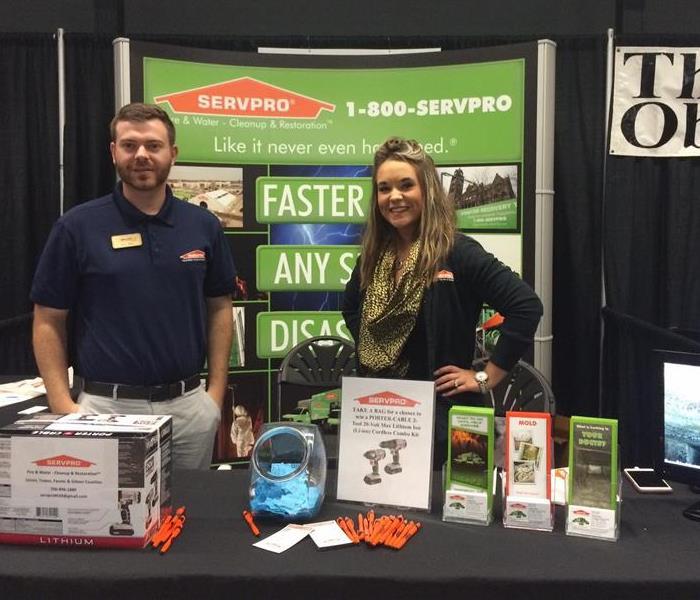 RL Key and Christine Harriott
RL Key and Christine Harriott
SERVPRO of Union, Towns, Fannin & Gilmer Counties had so much fun at the Home & Garden Show in Hiawassee hosted at the Events Center at Fieldstone! We were able to meet customers and give them information they never knew regarding what was lurking in their HVAC duct systems and information regarding mold due to flooding among so much more! Thank you to everyone who came out to see us! If you didn't get a chance to come out or have questions for us, feel free to contact SERVPRO of Union, Towns, Fannin & Gilmer Counties and our office will be happy to answer any questions you may have any kinds of issues you are experiencing. SERVPRO of Union, Towns, Fannin and Gilmer Counties is always here to help!
Relay for Life 2016
6/13/2016 (Permalink)
SERVPRO of Union, Towns, Fannin and Gilmer Counties had so much fun last Friday at the Relay for Life event in Blue Ridge, GA! Thank you to everyone who came out to support the cause!
What Is Relay?
- Organized, overnight community fundraising walk
- Teams of people camp out around a track
- Members of each team take turns walking around the track
- Food, games and activities provide entertainment and build camaraderie
- Family-friendly environment for the entire community
Because it's a team event, individual participants are not required to be there the entire time. But it's so much fun, you'll find it hard to leave!
SERVPRO of Union, Towns, Fannin & Gilmer Counties specializes in the cleanup and restoration of residential and commercial property after a fire, smoke or water damage event. Our staff is highly trained in property damage restoration and we are an IICRC Certified Firm. We believe in continuous training: from initial and ongoing training at SERVPRO’s corporate training facility to regular IICRC-industry certification, rest assured our staff is equipped with the knowledge to restore your property.
What to Do in A Flood!
6/1/2016 (Permalink)
Floods are one of the most common and widespread natural disasters in the United States, causing more damage than any other weather-related disaster. The location of your home or business has little to do with your risk factor for flooding. Just because you haven’t experienced a flood in the past, doesn’t mean you won’t in the future. According to the National Flood Insurance Program (NFIP), 20% of all claims were for policies in low-risk communities. Floods cost an average of $3 billion in annual losses with the average Commercial claims being $75,000,000.
The American Red Cross (ARC) offers the following flood safety tips:
Stay away from flood waters. If you come up on a flowing stream where the water is above your ankles, stop, turn around and go another way. Six inches of swiftly moving water can sweep you off of your feet.
Do not try to drive on a flooded road. If you approach a roadway that is flooded, turn around and go another way. If you are caught on a flooded road and the water is rising rapidly, get out of the car and get to higher ground. Most cars can be swept away by less than two of moving water.
Keep children out of the water. Children are curious and lack judgement about running water and contaminated water.
That’s pretty basic…so here are some less well known tips to keep you safer in a flood!
If you have time, secure your home. Bring in outdoor furniture. Move essential items to an upper floor.Do not walk through moving water.Use a stick to check the firmness of the ground in front of you.Turn off utilities at the main switches or valves if instructed to do so. Disconnect electrical appliances. Do not touch electrical equipment if you are wet or standing in water.Six inches of water will reach the bottom of most passenger cars causing loss of control and possible stalling.A foot of water will float many vehicles.After a Flood
Listen for news reports to learn whether the community’s water supply is safe to drink.Be aware of areas where floodwaters have receded. Roads may have weakened and could collapse under the weight of a car. Clean and disinfect everything that got wet. Mud left from floodwater can contain sewage and chemicals. Call SERVPRO of Union, Towns, Fannin & Gilmer Counties to help with cleanup, we have the equipment and expertise to restore your home to it's former glory.
Flood Safety Tips
4/28/2016 (Permalink)
Even though we live in the mountains, there is the potential for flooding. Anywhere it can rain, it can flood. The most dangerous type of flood, a flash flood, happens quickly with little or no warning. Just ask the people who live in Gilmer County who experienced flooding in early August--or the people in Union County who experienced flooding in early July.
Here are some tips provided by ready.gov to keep you safe during floods:
Do not walk through moving water. Six inches of moving water can make you fall.Do not drive into flooded areas. If floodwaters rise around your car, abandon the car and move to higher ground if you can do so safely. You and the vehicle can be swept away quickly.Avoid floodwaters; water may be contaminated by oil, gasoline, or raw sewage.If your property suffers flood damage, clean and disinfect everything that got wet. Mud left from floodwaters can contain sewage and chemicals.
National Preparedness Month
4/28/2016 (Permalink)
SERVPRO Industries, Inc. is once again proud to be a member of the National Preparedness Month Coalition and is committed to helping the U.S. Department of Homeland Security in their efforts to promote the importance of preparedness planning.
What does it mean to be prepared?
For FAMILIES, it means households have an emergency supply kit so they can be self-reliant for at least three days in case of emergency, and they have a plan for how they will respond and reconnect after an emergency.
For BUSINESSES, it means employers have planned for how they will survive a disaster; they've backed up critical information, developed a plan for assisting employees on site, established a call tree to account for employees, and identified back-up sources of power and supplies.
For SCHOOLS, it means schools and districts have developed, implemented, and communicated crisis plans.
Being prepared means staying informed, knowing how to get information and alerts from local ememrgency management agencies, and understanding the specific risks in your community and preparing against them.
 The professionals at SERVPRO understand the importance of safeguarding your property with quality weatherproofing!
The professionals at SERVPRO understand the importance of safeguarding your property with quality weatherproofing!





 24/7 Emergency Service
24/7 Emergency Service



















